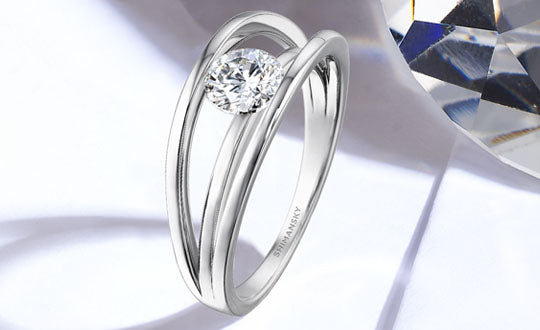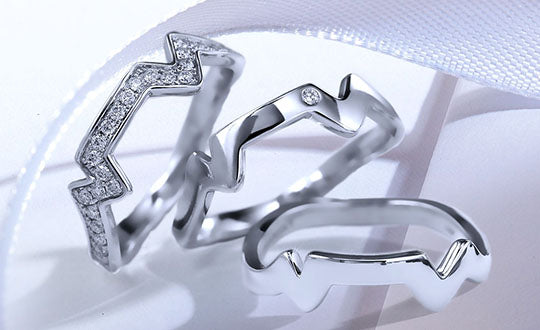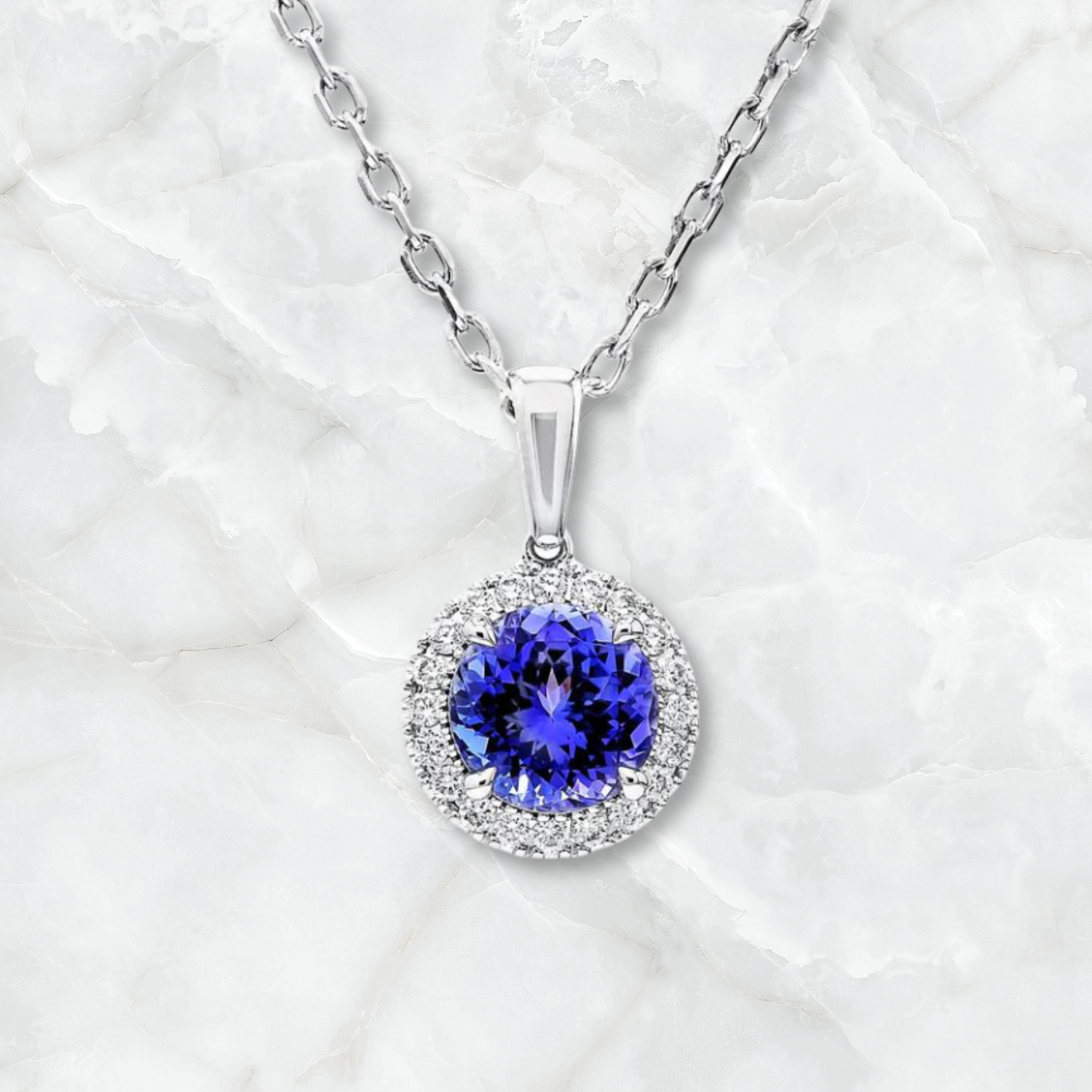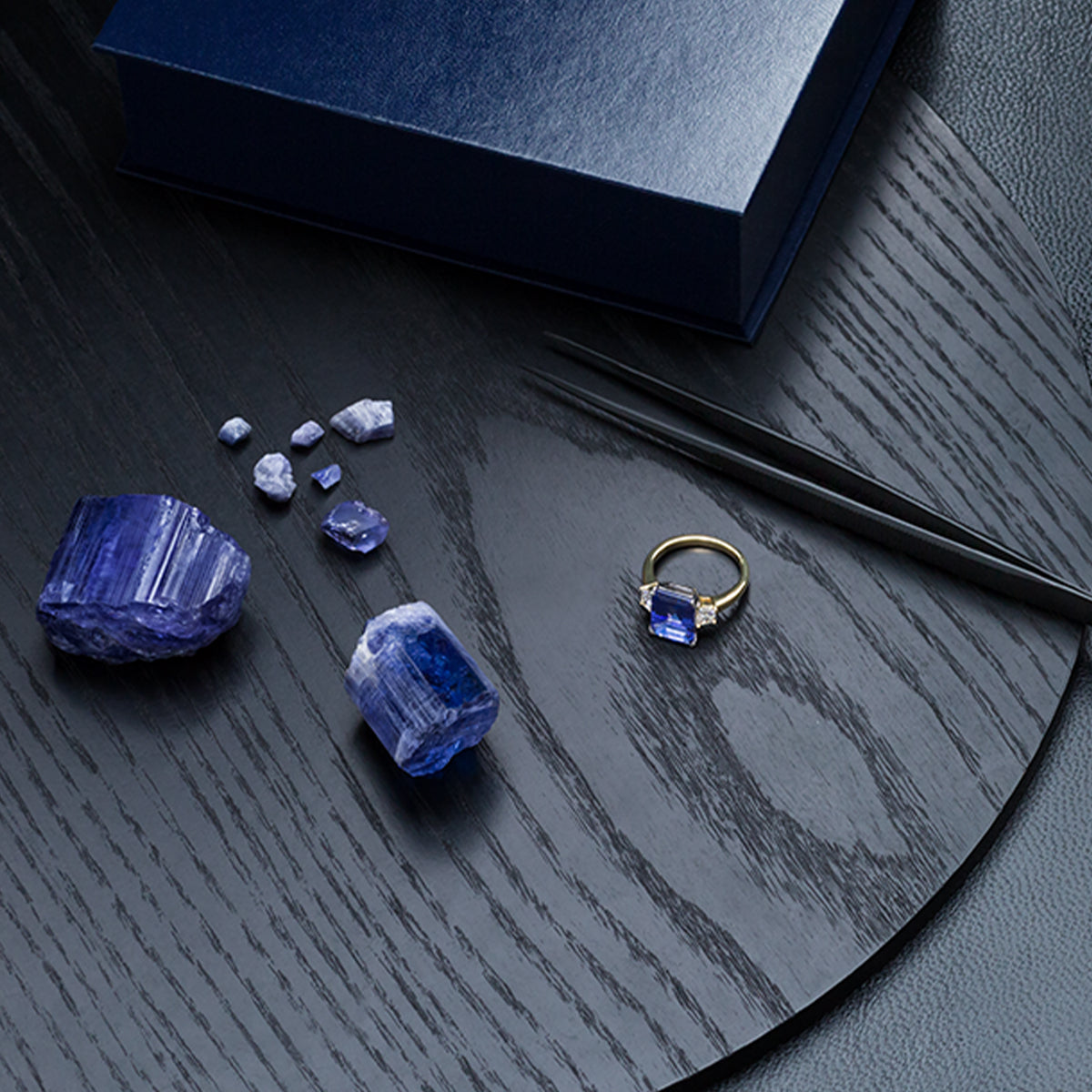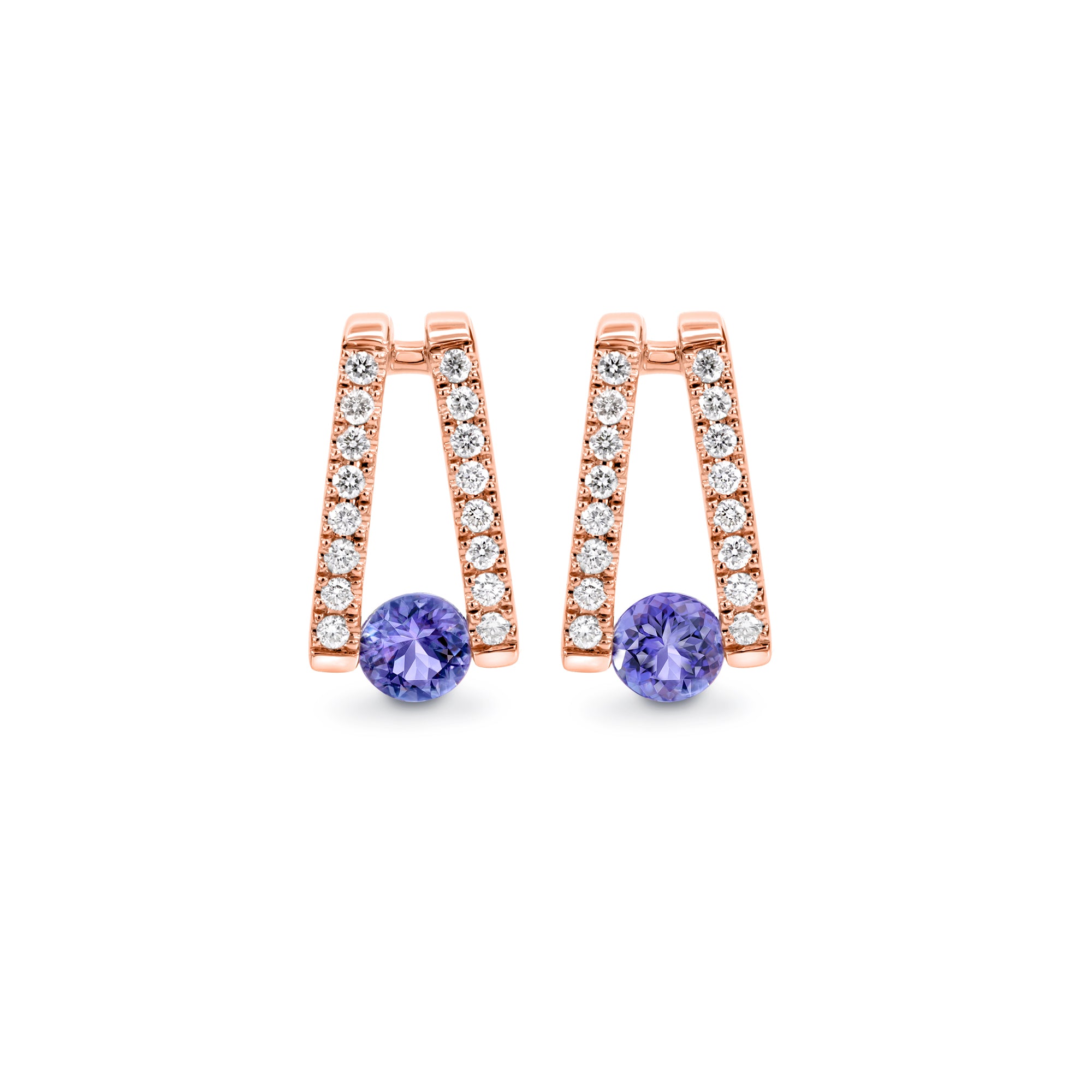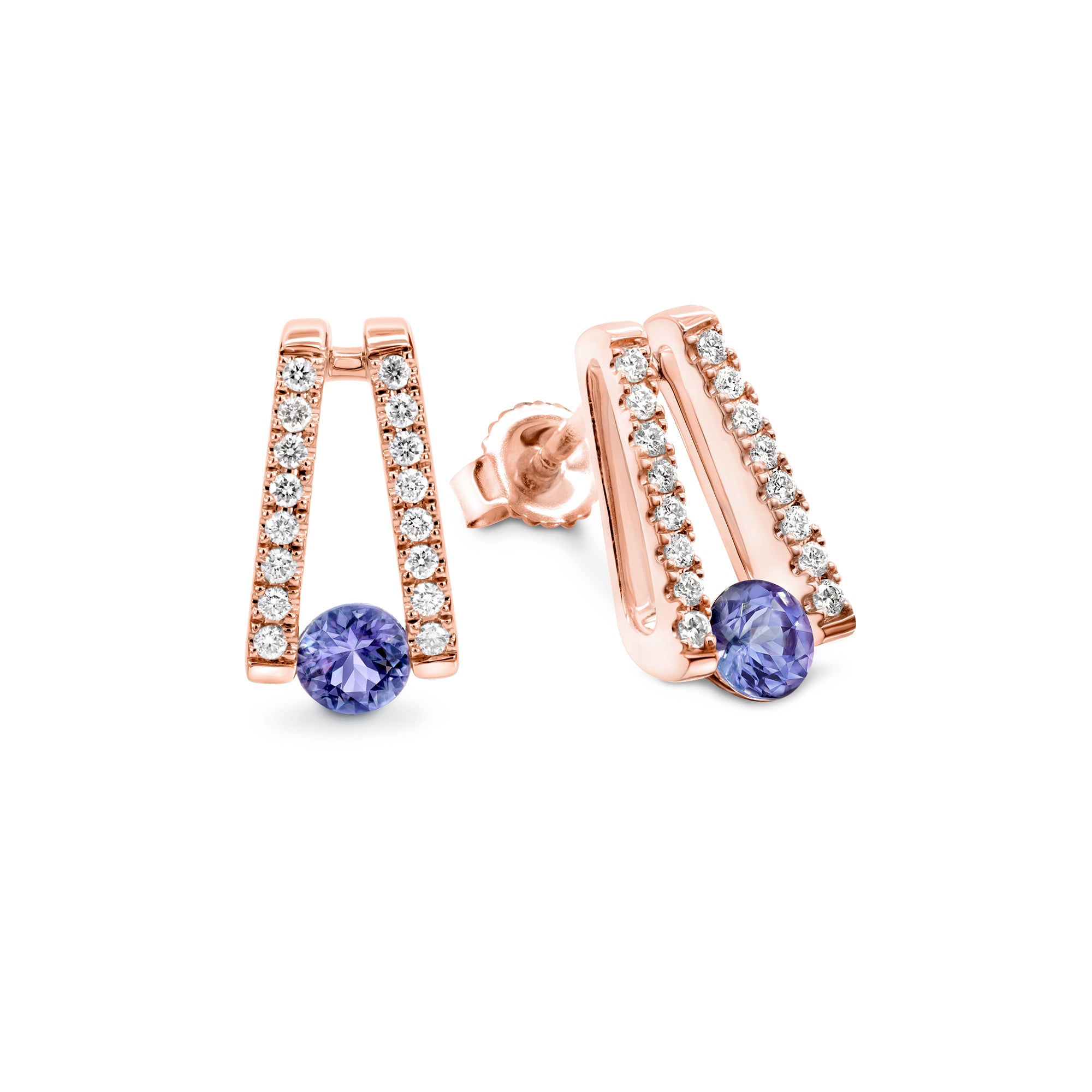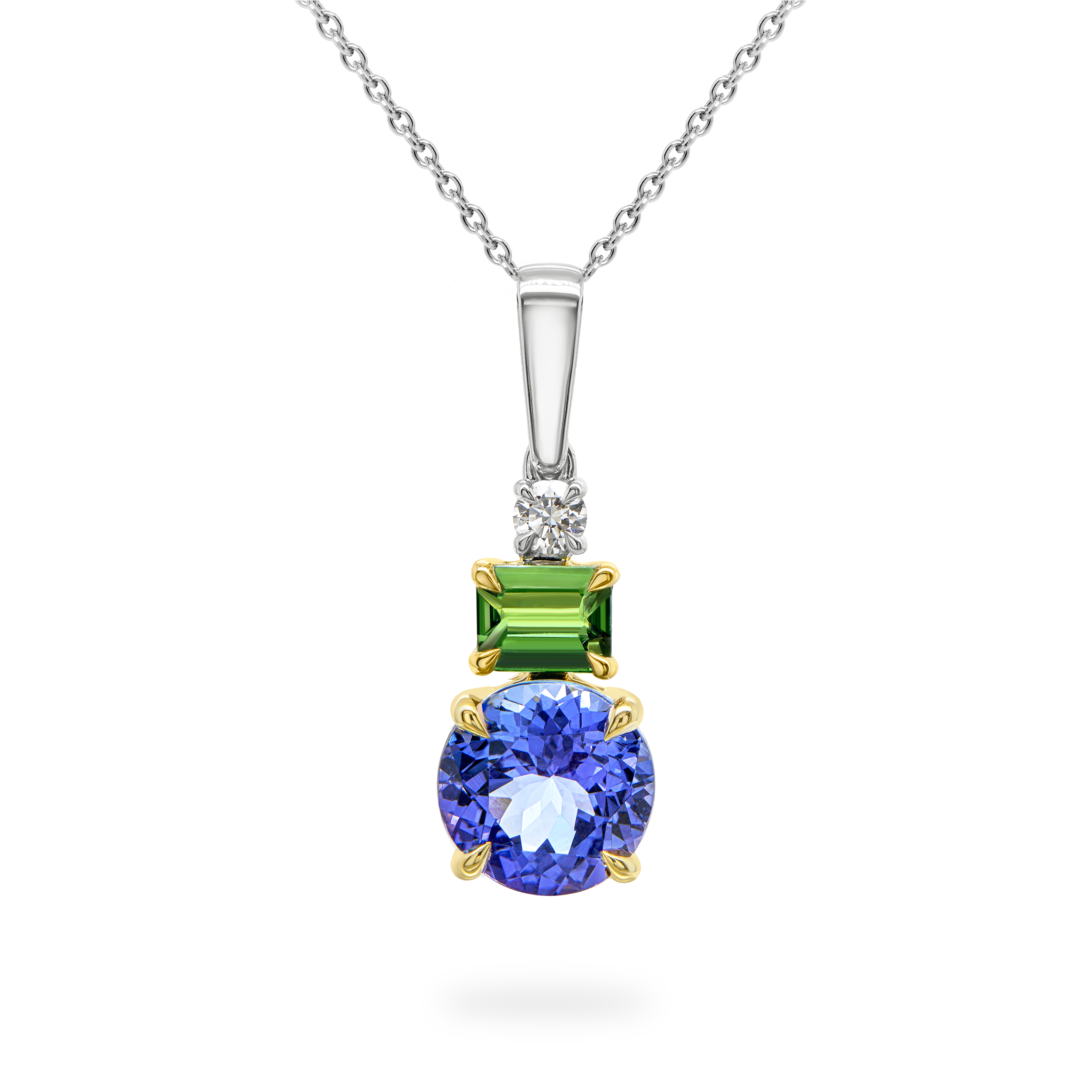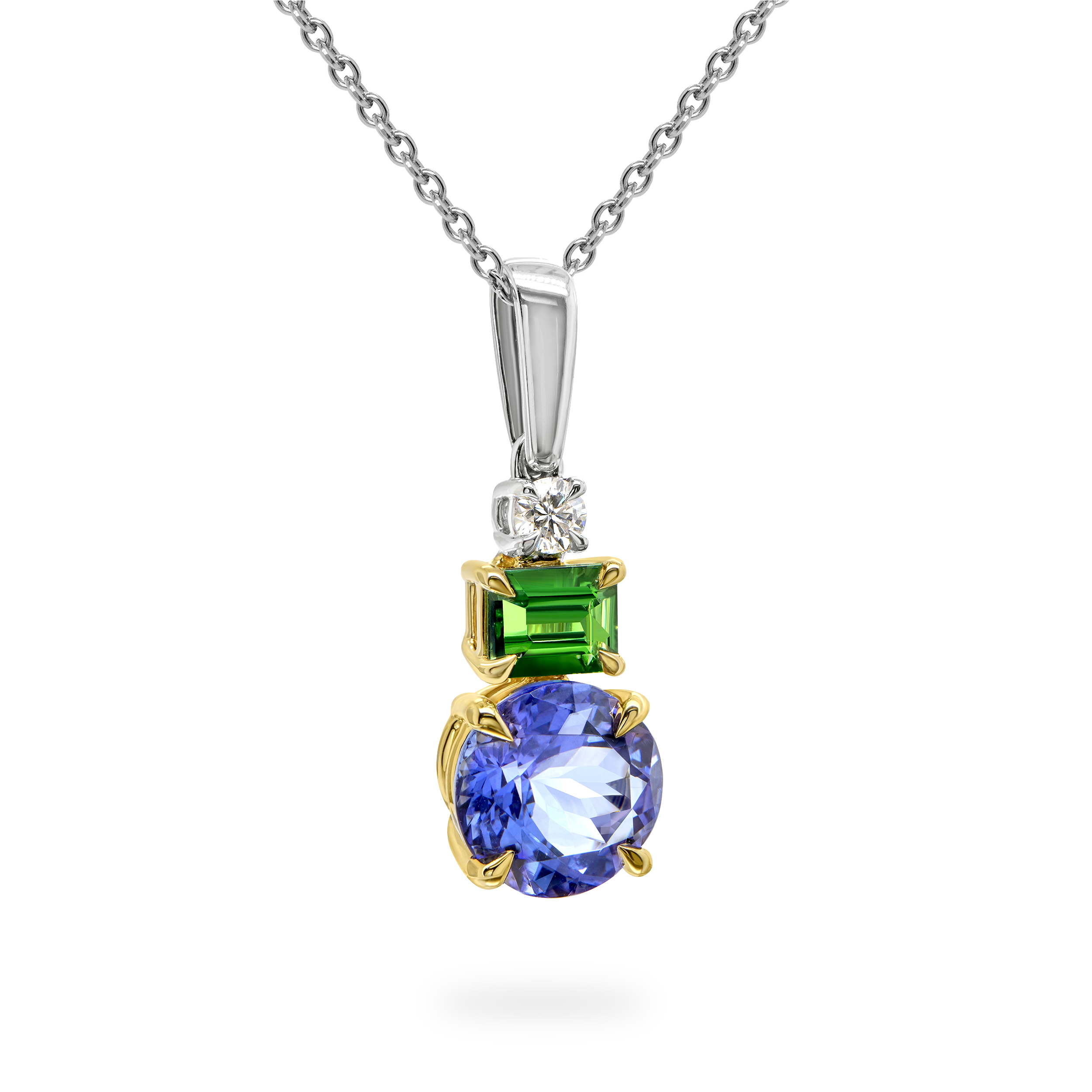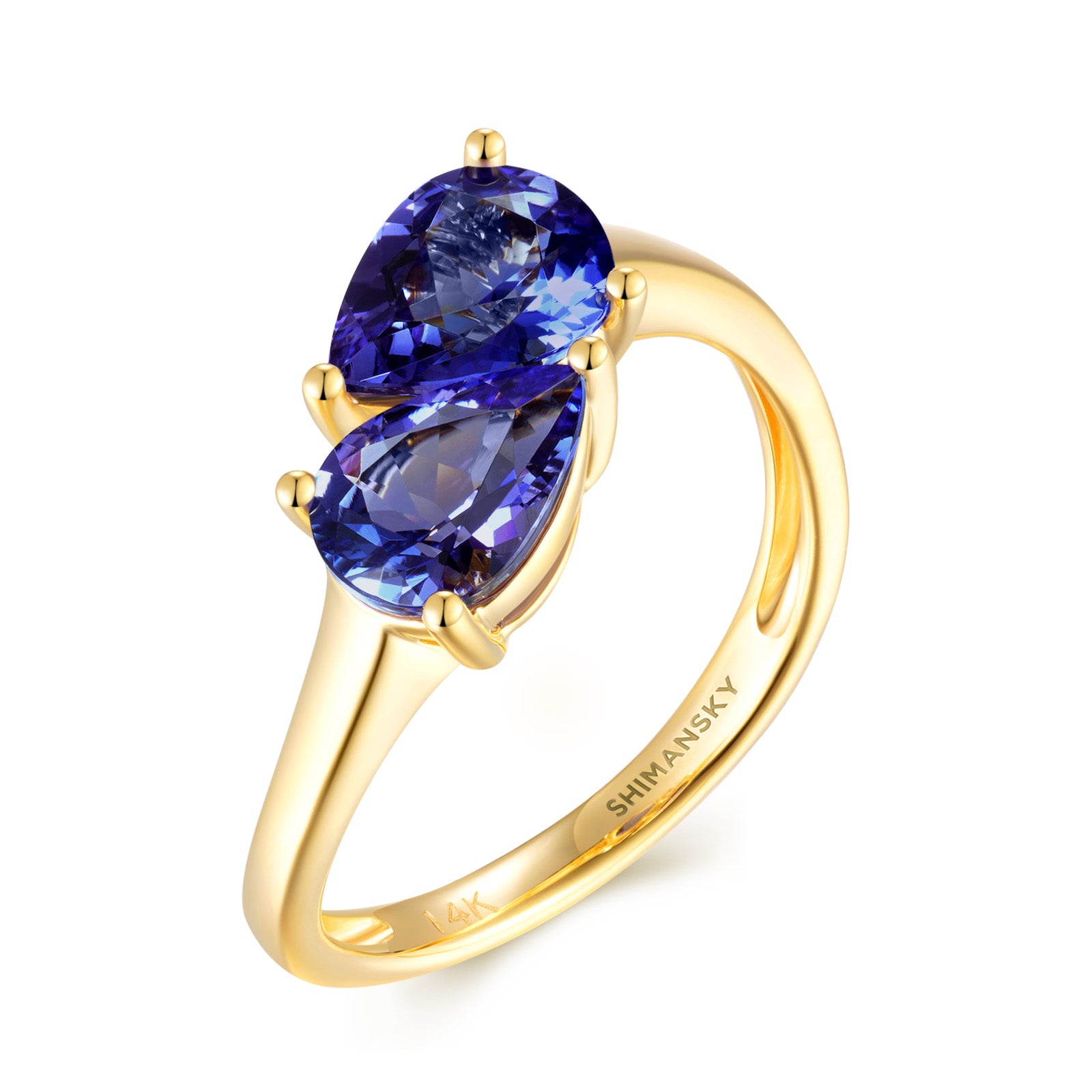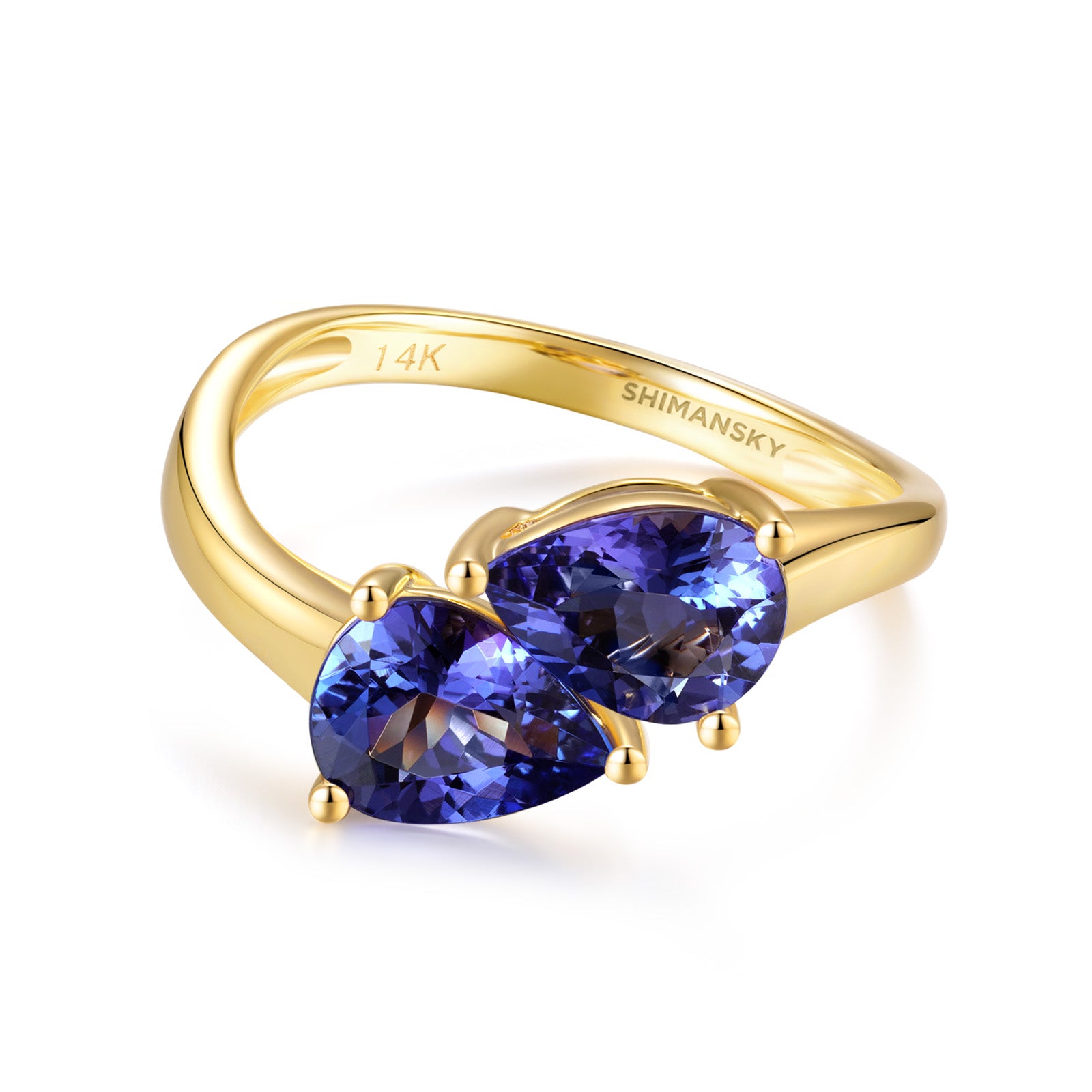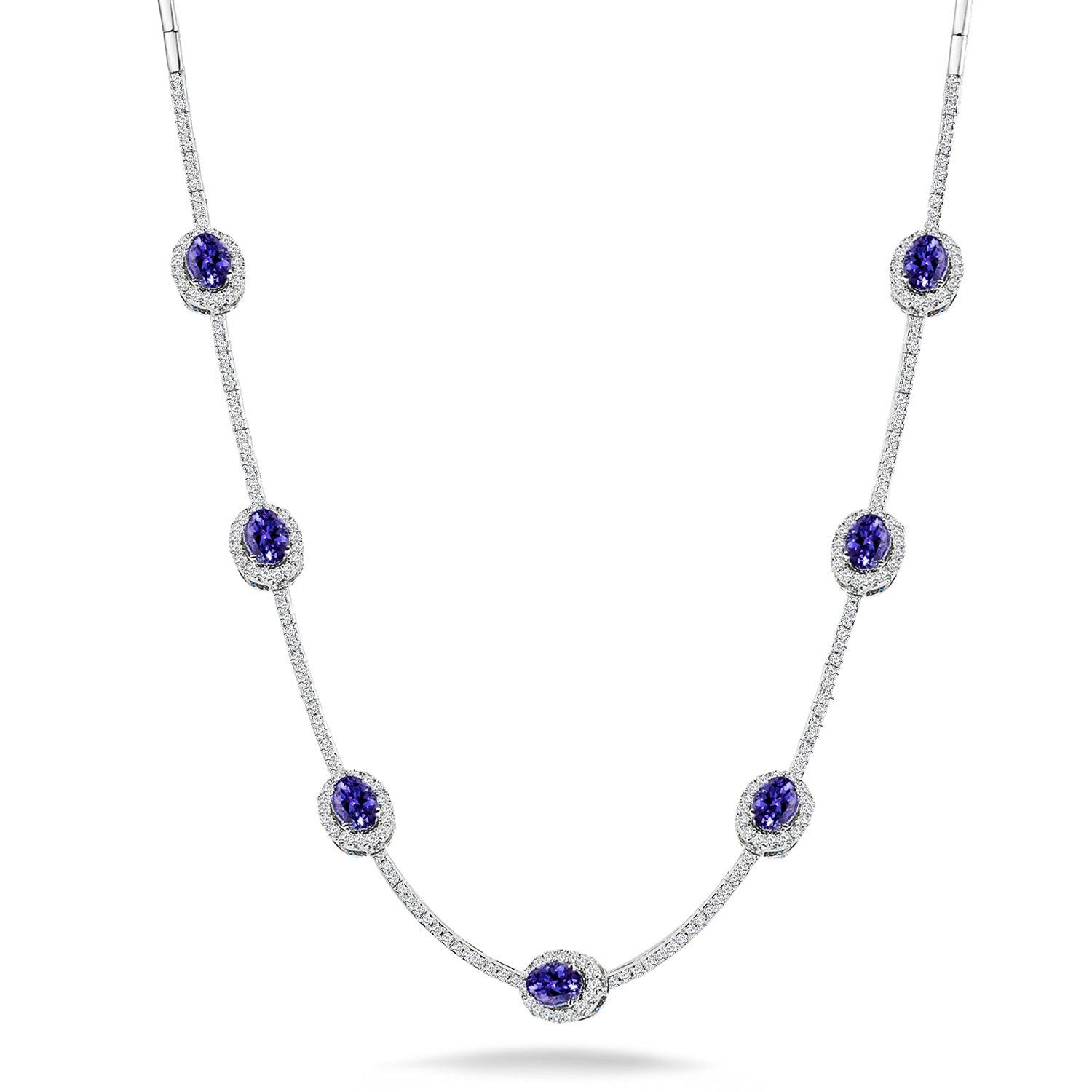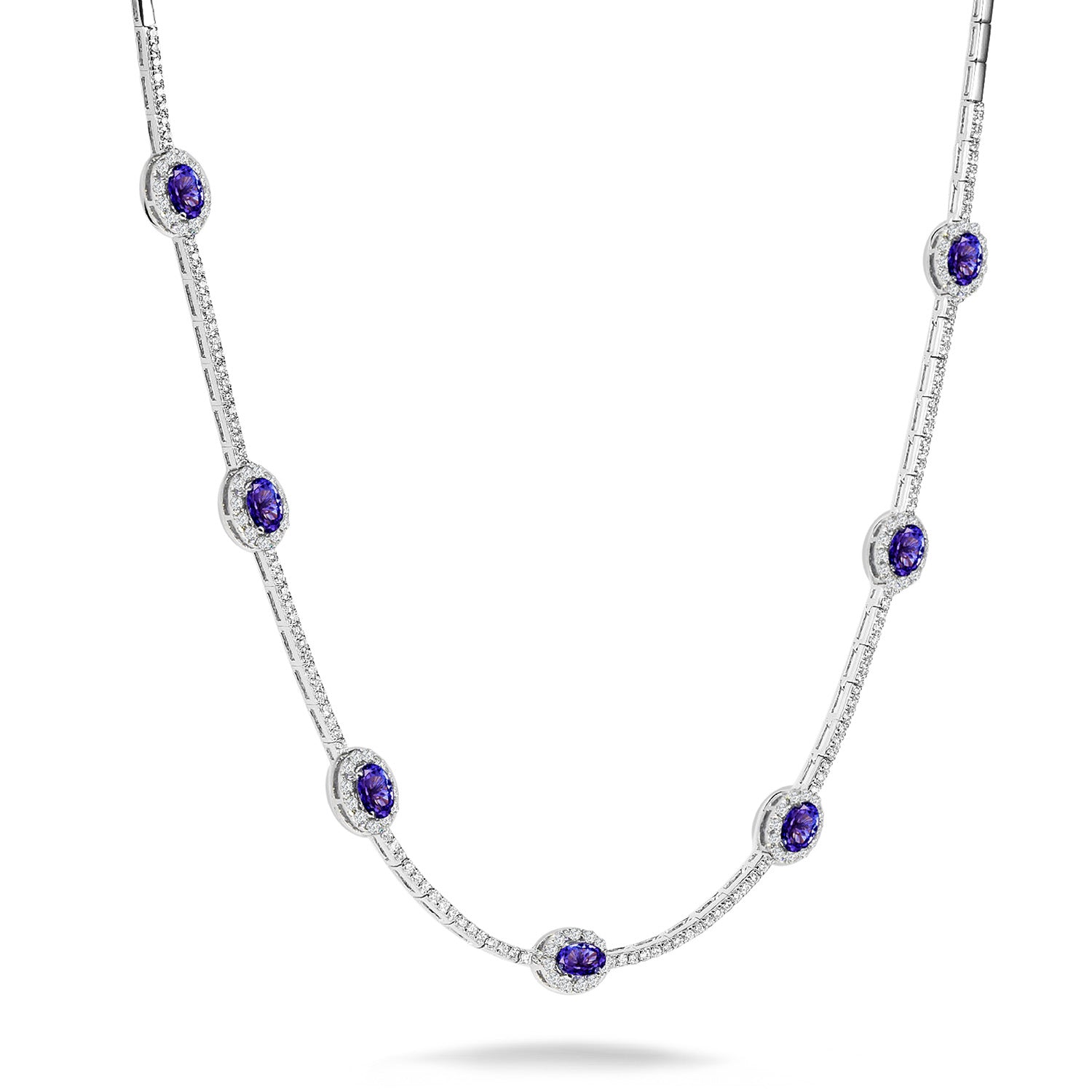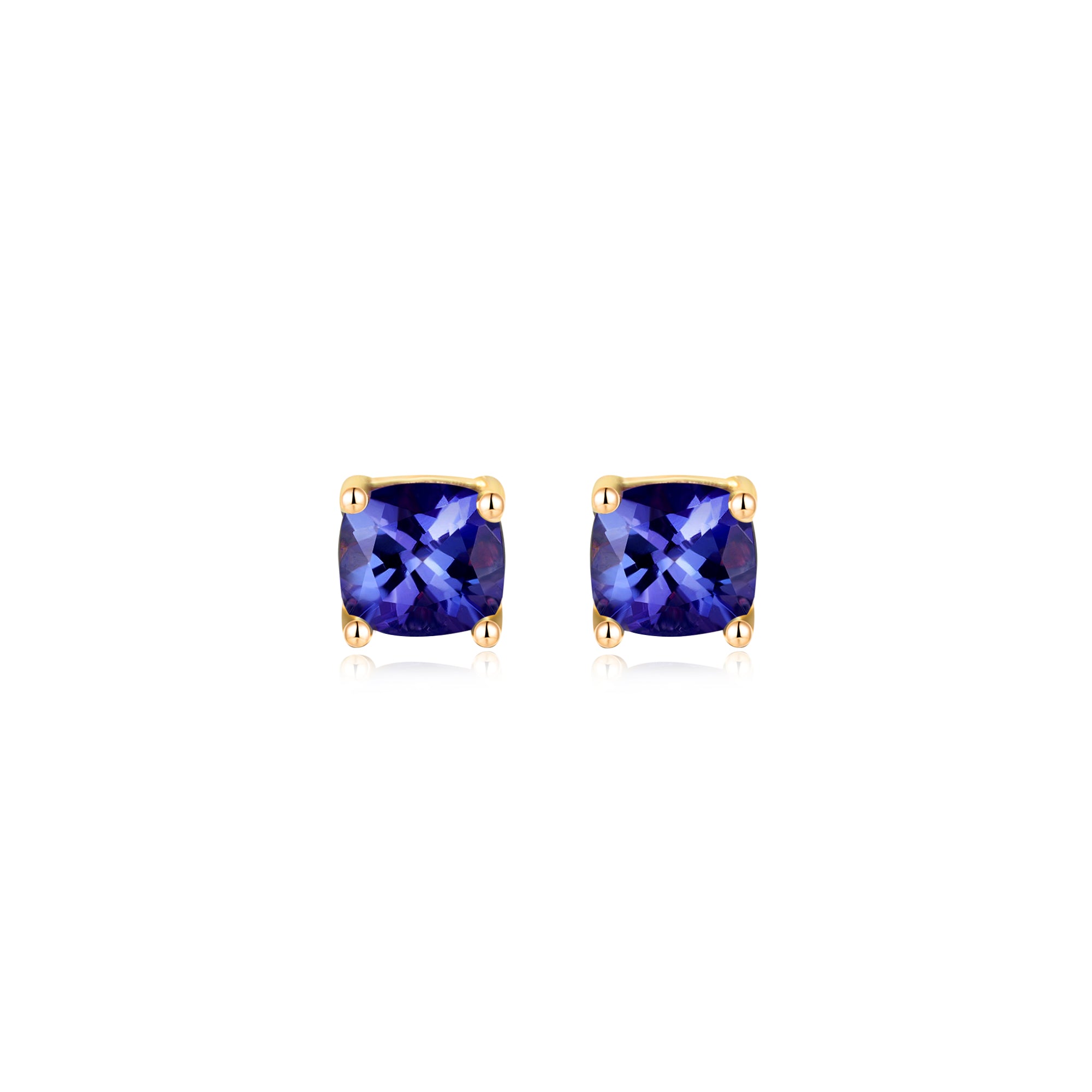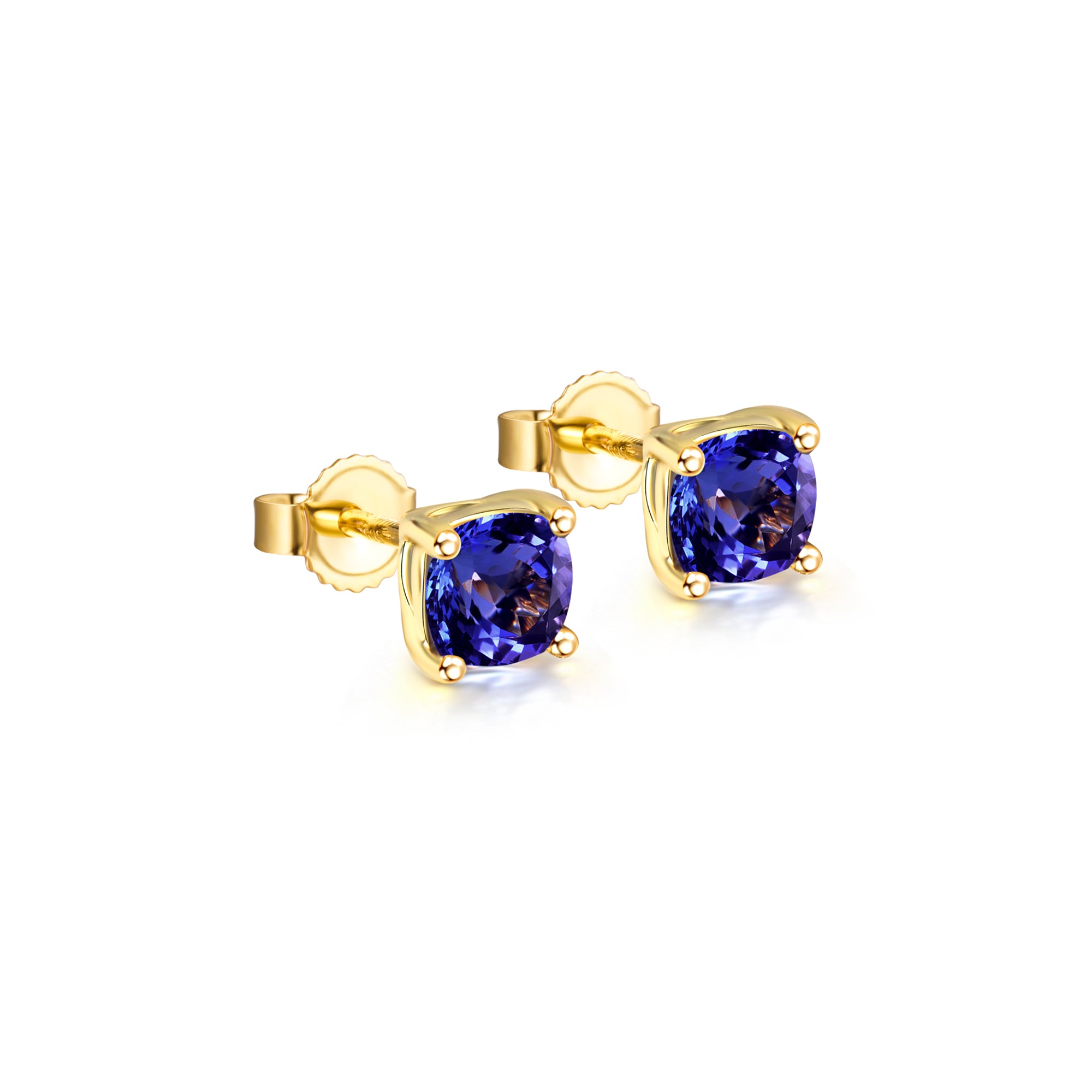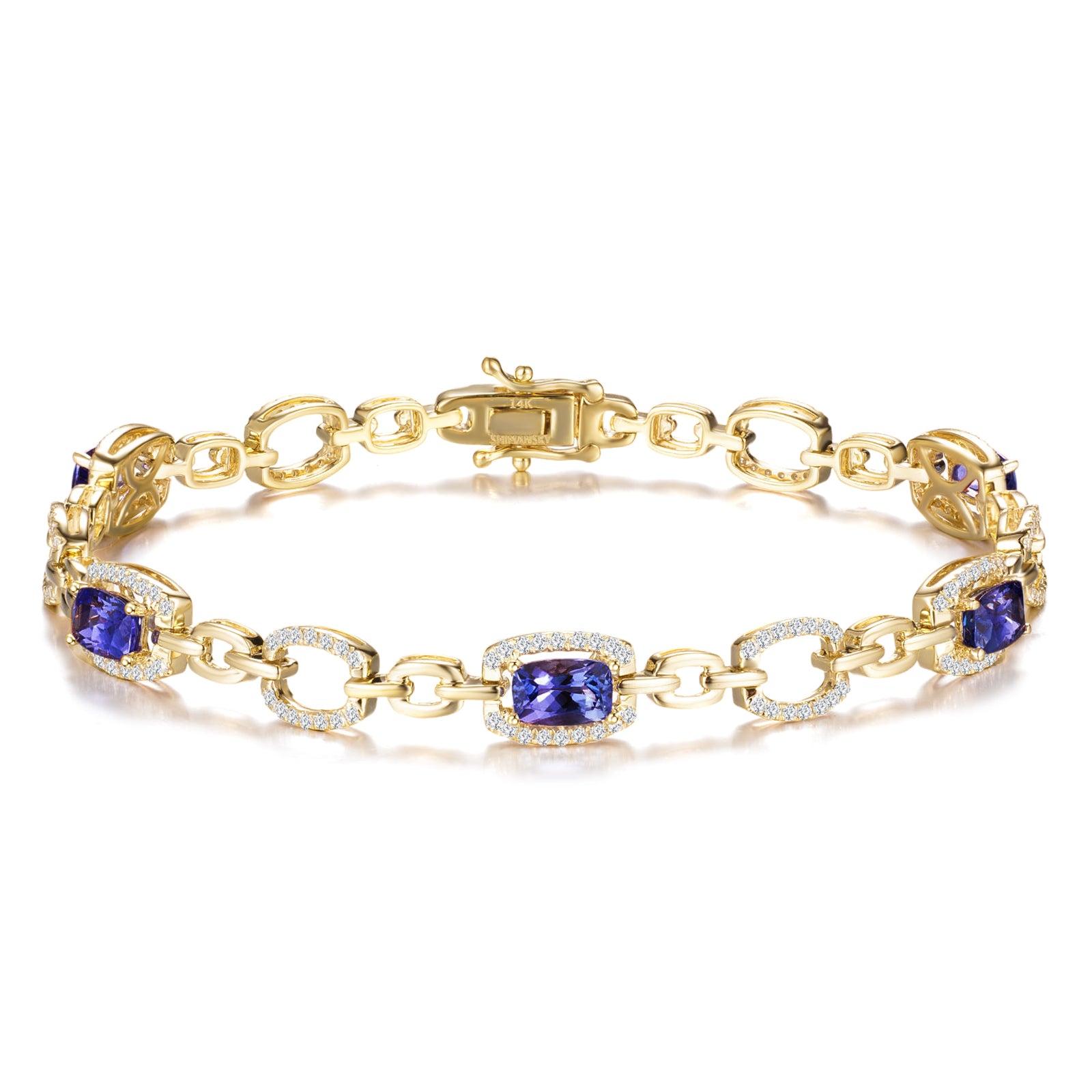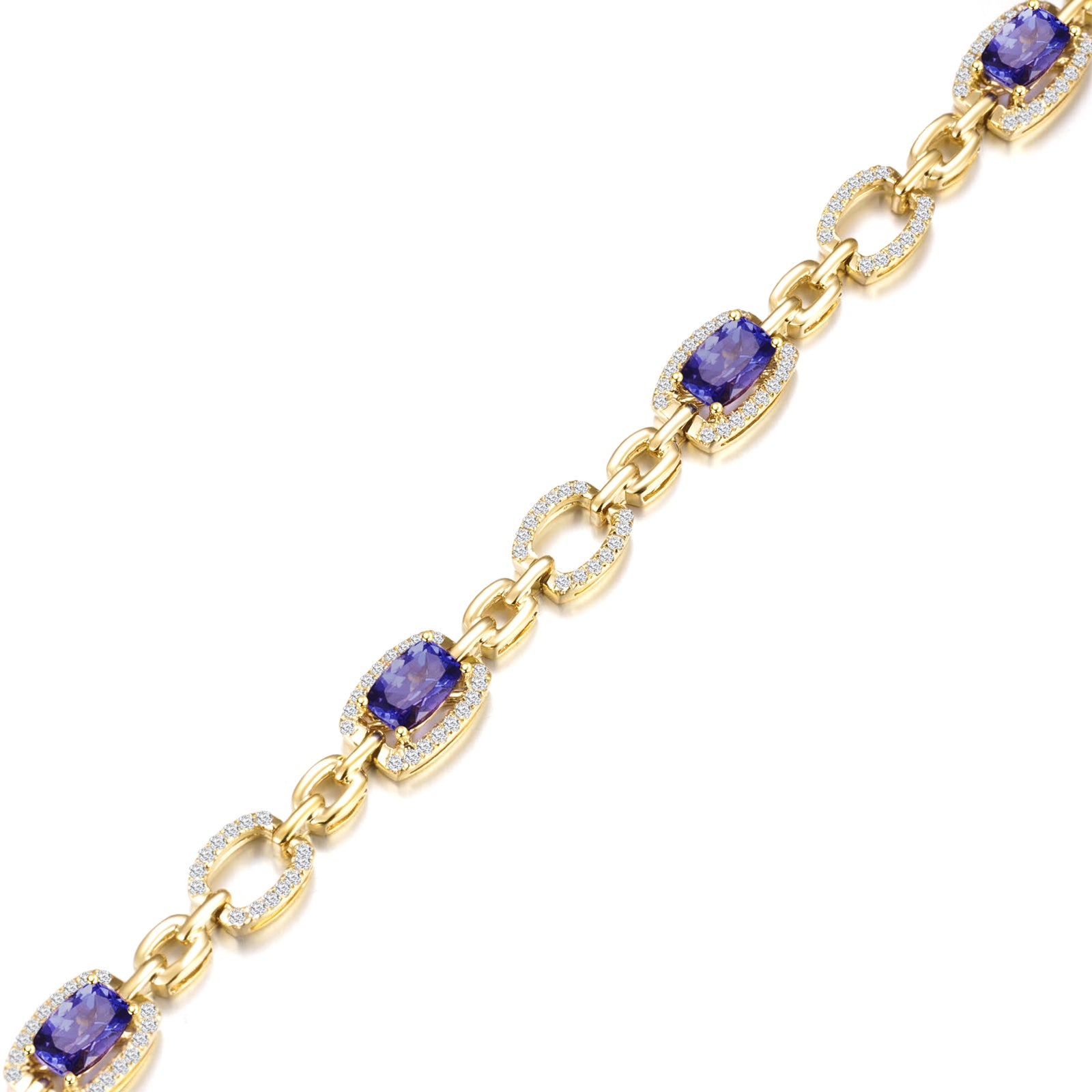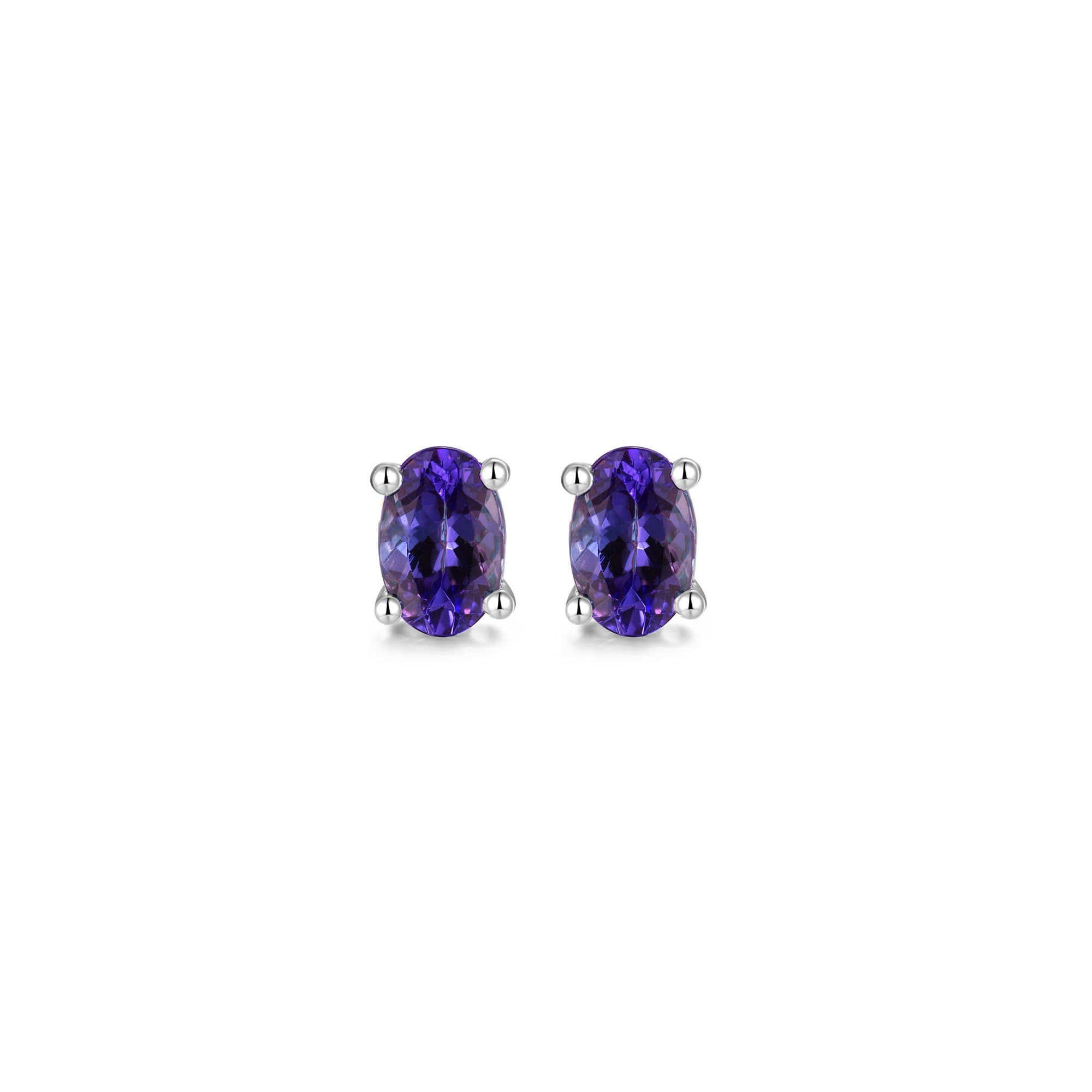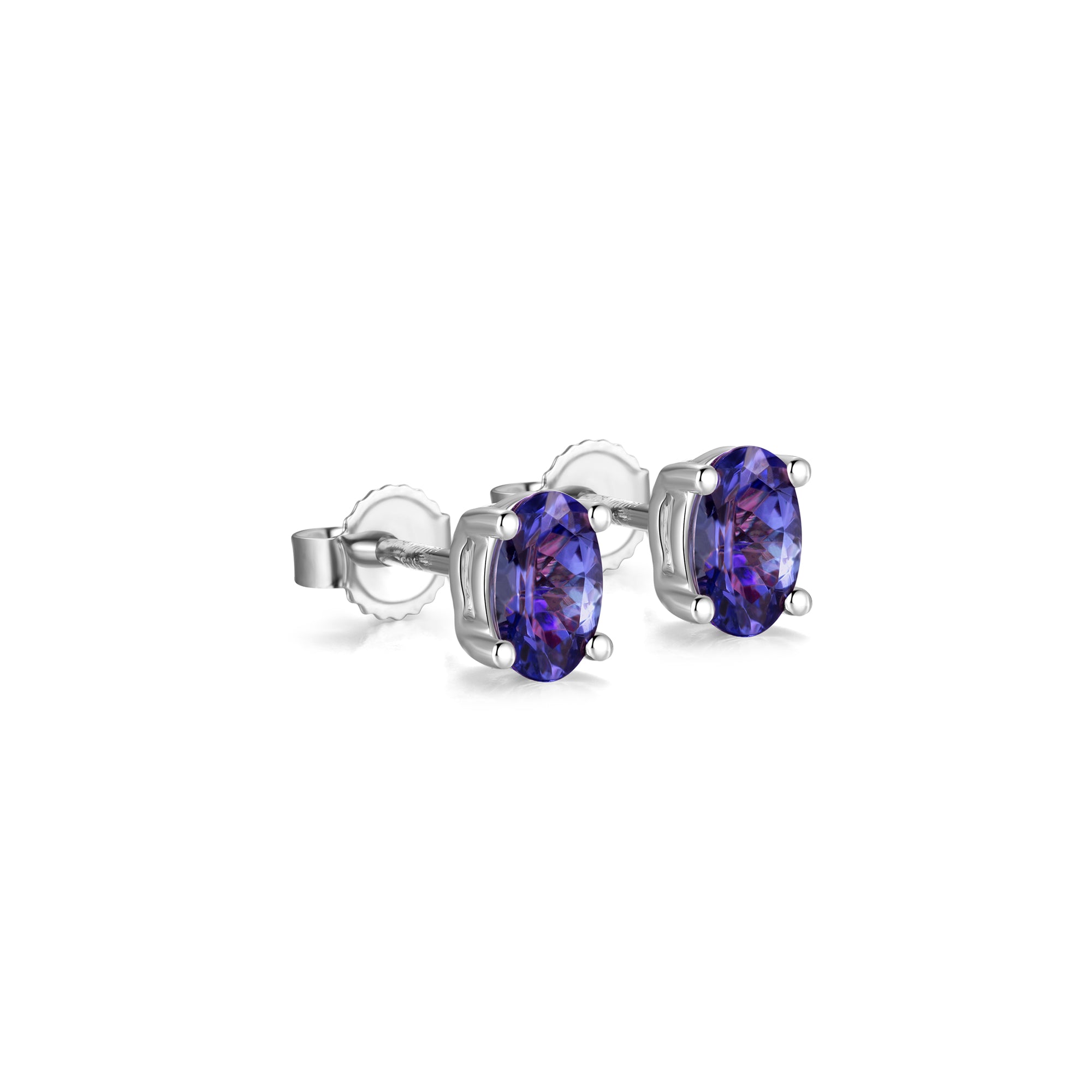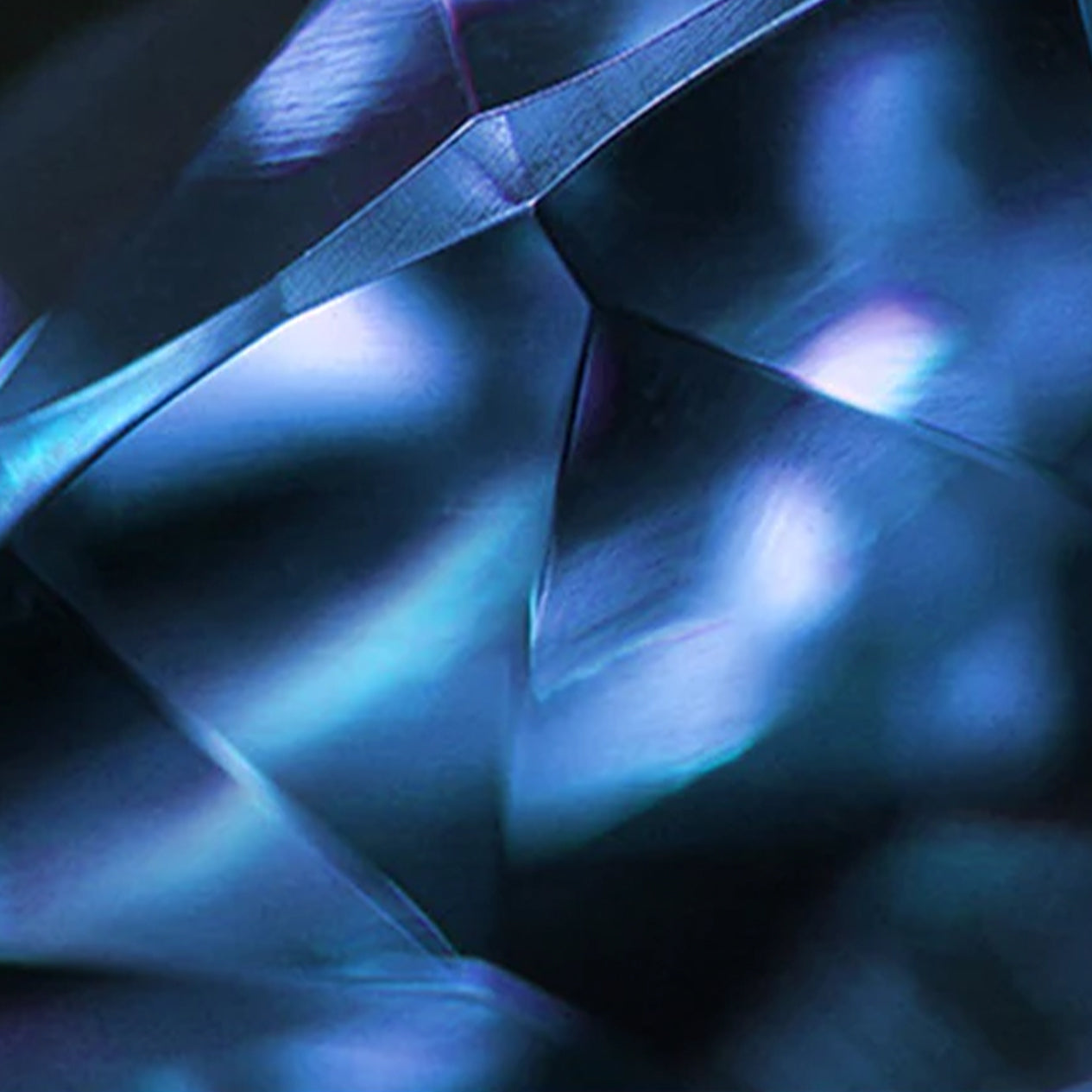
1. The Tanzanite Cut
Have you ever looked at your tanzanite jewellery creation and noticed a beautiful sparkle as you view it from different angles? This sparkle exists because of the way in which the stone has been cut. Cutting is one of the 5Cs of value, and is the only C that is determined by man, and not by nature.
A tanzanite’s cut refers to the proportion and brilliance of its facets. Cutting requires years of experience and a wealth of knowledge to master. An excellent cut can improve the appearance of a stone with low colour and clarity grading, while a poor cut has the ability to impair a beautiful gemstone.
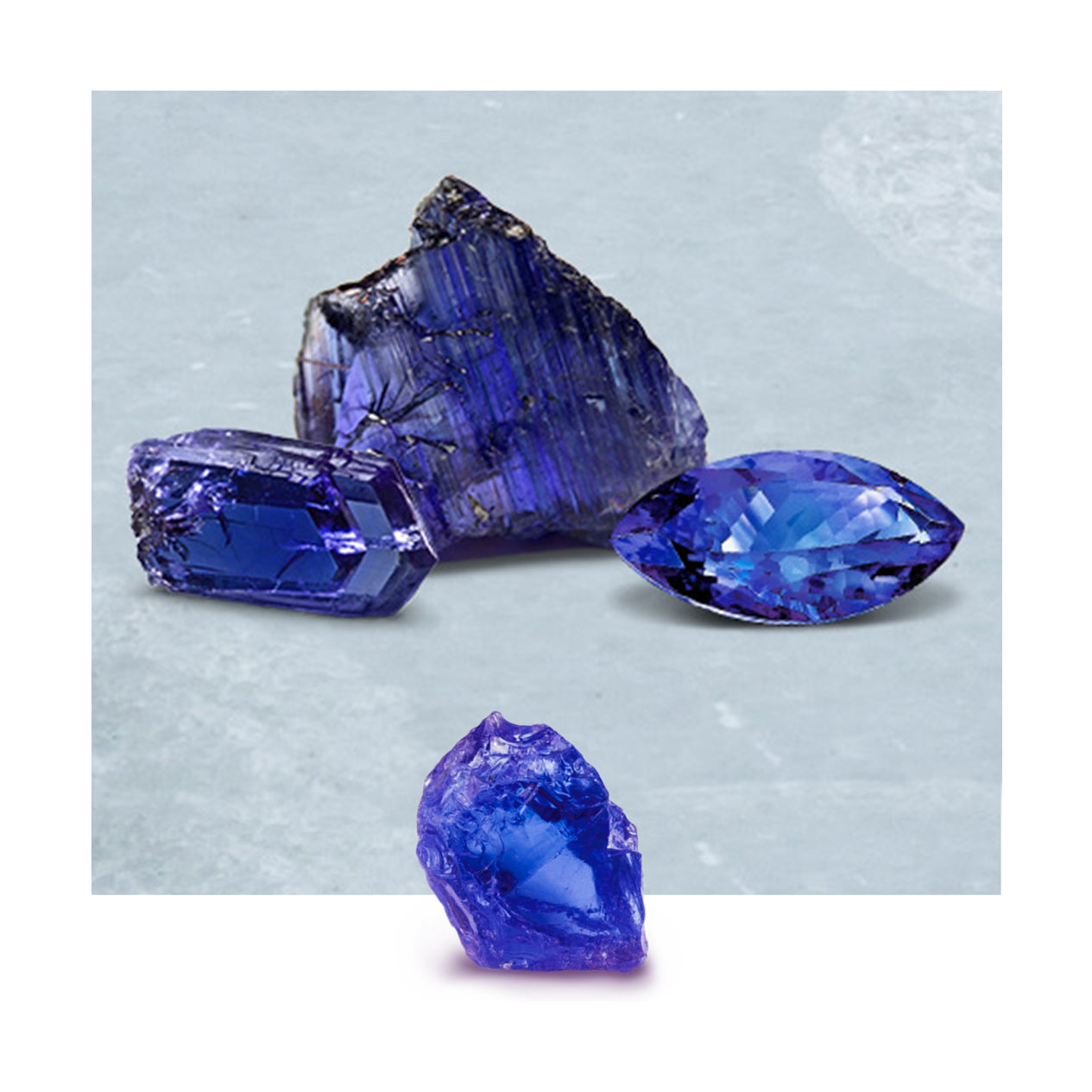
It is extremely important for a tanzanite gemstone to be expertly cut, as the cut impacts not only the brilliance and fire of your stone, but also the overall quality. A fine cut tanzanite will typically yield up to 30% premium over stones cut with weight maximization techniques. Cut is thus a very important factor to consider when purchasing tanzanite. A poorly cut tanzanite can make the best quality gemstone look inferior and often gemstones are cut to maximise their weight and not their beauty. All Shimansky Ayanda Queen of Tanzanite loose stones, as well as the stones set in tanzanite jewellery creations, are cut to perfection, ensuring the best quality tanzanite available.
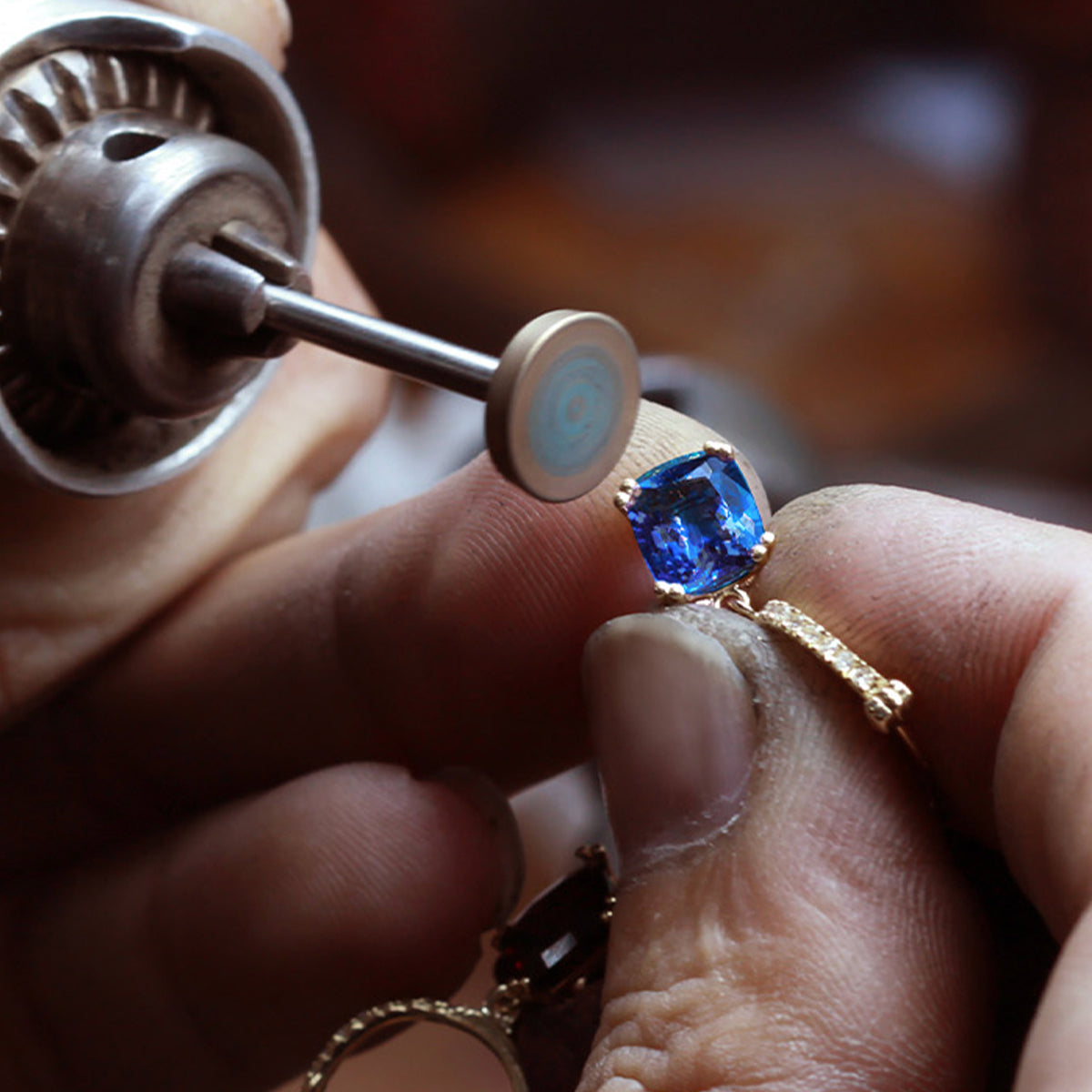
Unlocking Brilliance
The cut of the gemstone goes beyond its shape (for example a round, oval or pear shape stone). It refers to the brilliance yielded by the facets cut into the stone. It takes a cutter years to perfect the technique of cutting tanzanite: tanzanite is softer than diamonds, which means that it’s more easily damaged during the cutting process, and thus requires extra care and precautions.
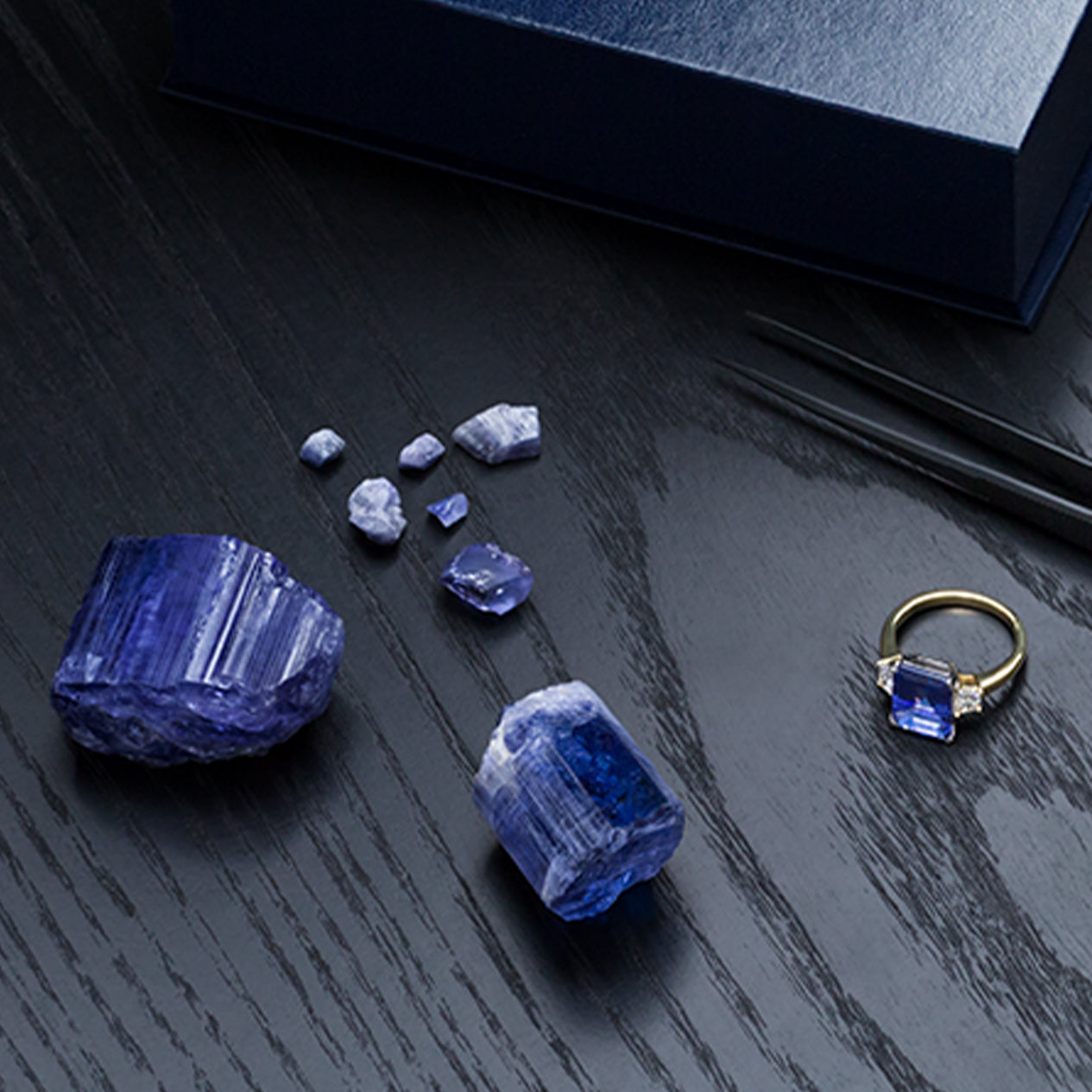
Tanzanite Cut Considerations
There are a few things to be aware of when looking at a tanzanite’s cut, the first of which, is windows. A window is a “dead” area in the middle of the gemstone which resembles a hole or empty space, as it has no light reflection. Windows come about when the stone is cut too shallow, or when it is cut too heavy in the back. Some tanzanite gemstones are cut with bulges in their pavilions to maximise the stone’s weight retention. This weight-saving technique ensures a larger carat weight, but has a negative impact on the cut grading, as a tanzanite cut for weight has to sacrifice some of its beauty. Even a tanzanite of beautiful colour can appear lifeless if it has been cut for weight preservation, making this a cutting technique best avoided.

Tanzanite Setting and Purchase
Tanzanite stones cut for weight maximisation are typically more difficult to set in a jewellery creation because they are more likely to have a thicker girdle and a bulky pavilion. Cutting for weight also increases the risk of breakage during the setting process. Shimansky Ayanda Queen of Tanzanite gemstones are cut for maximum brilliance, and to enhance their beauty, not to maximise their weight. When buying tanzanite in South Africa, be sure to purchase from a reputable jeweller that values a gemstone’s brilliance more than its weight preservation. Ask to see the gemstone’s certification, and be sure to ask if you are uncertain about any of the information pertaining to its cut.
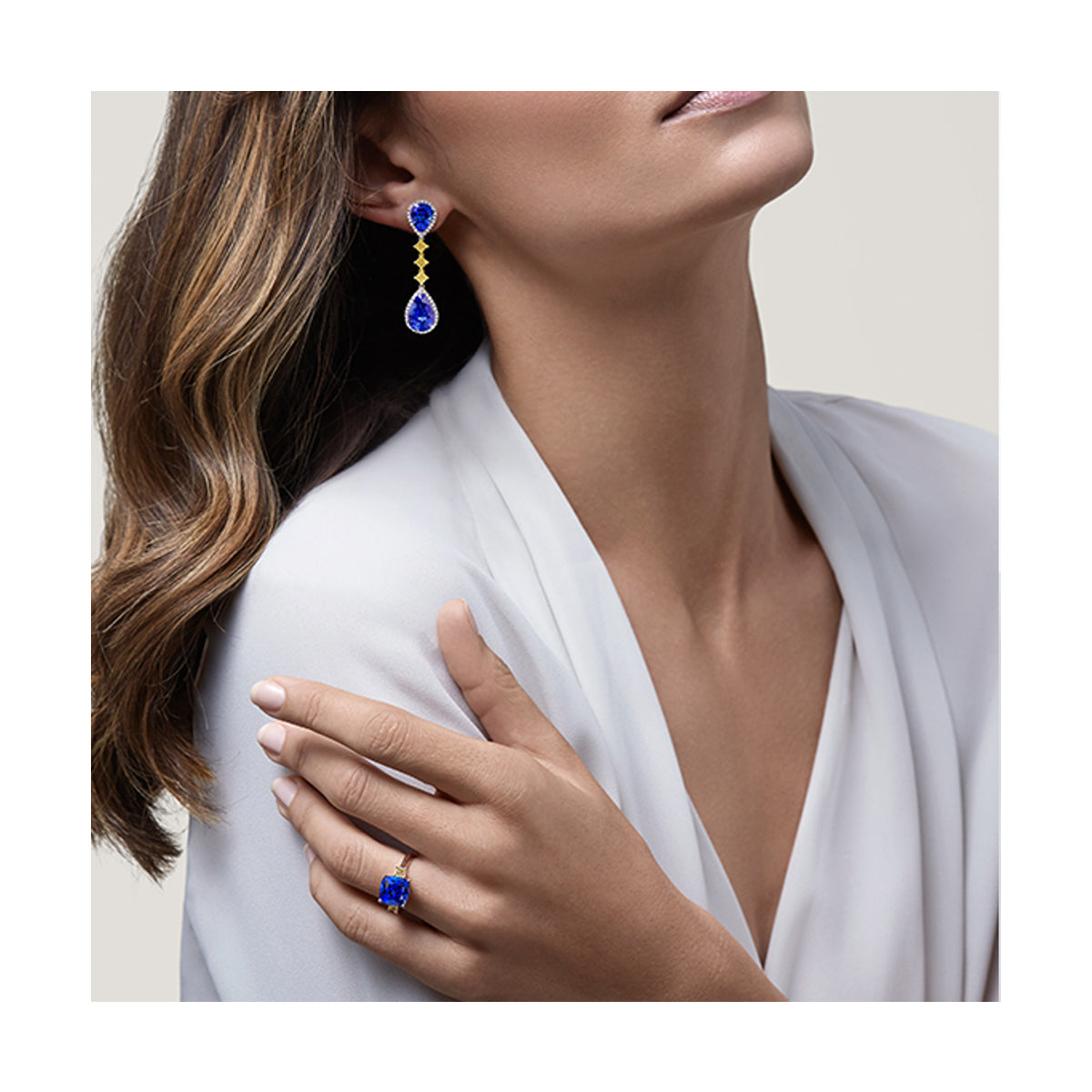
Precision in Brilliance
An excellent cut ensures that the stone’s facets reflect light to create maximum brilliance and scintillation. To create an excellent cut, the angles on the table of the stone, and the angles of the pavilion of the stone must be perfectly proportioned and calibrated. When wearing your tanzanite ring or tanzanite necklace, you should notice a “bouncing” of light, or sparkling, with your movements. The more the gemstone sparkles, the better it has been cut. If tanzanite is cut too deep or too shallow, the radiance will deflect through the sides of the stone, thus limiting its brilliance. Depth percentage is calculated by dividing the depth of the stone by the stone’s girdle diameter. The ideal range is 60% to 80%.
Only fine cut stones are selected for Shimansky tanzanite jewellery creations. As such, Shimansky stocks only the best cut Ayanda tanzanite, and all tanzanite gemstones are graded for their cut as part of the certification process.
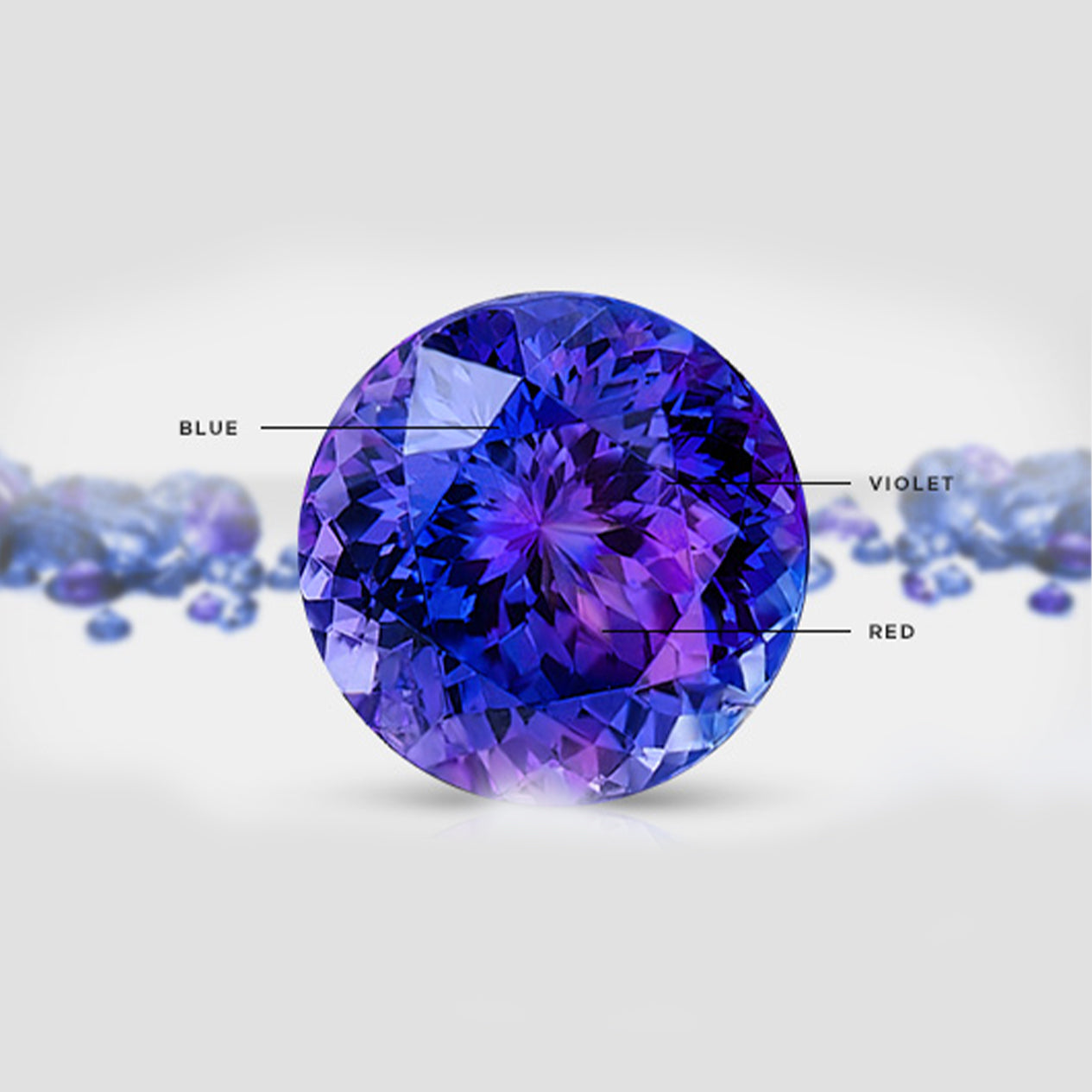
Discover
2. Tanzanite Colour
When grading white diamonds, the whiter the stone, the higher the value. In contrast, when it comes to coloured gemstones, the more intense or saturated the colour, the more rare the stone, and the higher its value. Tanzanite has what many would consider the finest blue hue in the world of gemstones. It has the ability to make even the most beautiful sapphires appear to be lacking in colour. As a result, tanzanite jewellery has gained momentous popularity, and tanzanite has become one of the world’s most coveted gemstones.
Tanzanite is one of the only trichroic gemstones known to man, meaning it has the ability to display three colours within the same gemstone. As light passes though the gemstone, it vibrates in different planes, which causes the stone to show a different colour depending on from which axis you are looking at it. The three colours seen in a tanzanite are shades of blue, violet and red. Trichroism makes the cutting process more complicated than it would be for gemstones without this interesting characteristic. The colour of the finished stone will largely depend on the way in which it has been cut. The top and most sought-after colour for tanzanite is vivid blue, so cutters will try to cut the gemstone in such a way as to accentuate its blue hues.
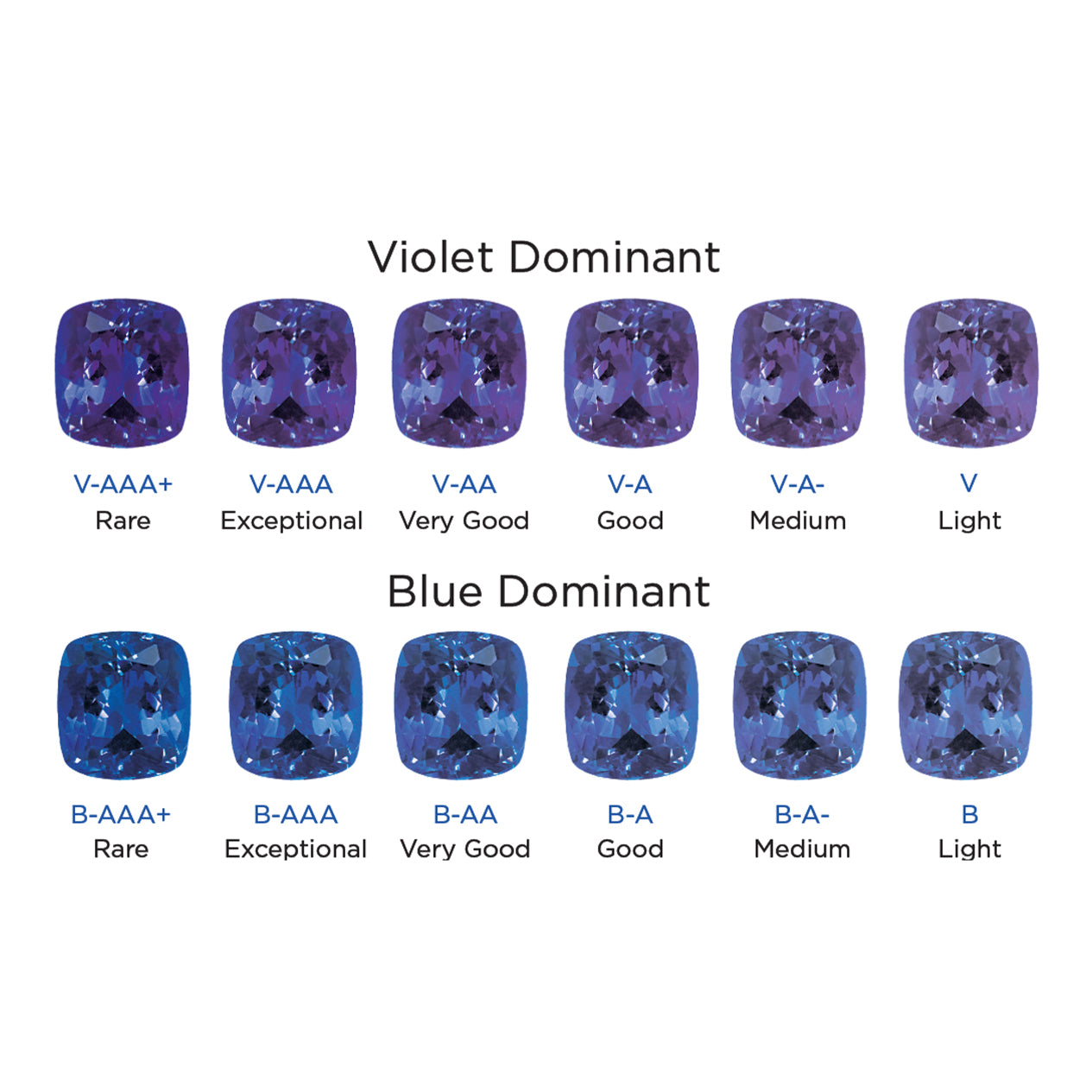
The Art of Maximizing Color and Saturation
A tanzanite cutter spends a lot of time examining the rough stone to determine how it can be cut in an orientation that will yield the maximum face-up blue colour.
Good quality tanzanite has a deep royal blue or violet colour. Colours range from rich royal blues or vibrant violet to paler shades. The colour dominance depends on whether the gem is cut and polished from the long or the short axis of the crystal shaped rough tanzanite; and the more intense the colour the better the quality.
The depth of colour, or tone, in a tanzanite gemstone refers to the stone’s lightness or darkness and ranges from Intense (AAA+) to Faint (A). The saturation of the stone’s hue is often considered the most important factor when grading tanzanite. Saturation refers to the level to which colour “fills” the stone.
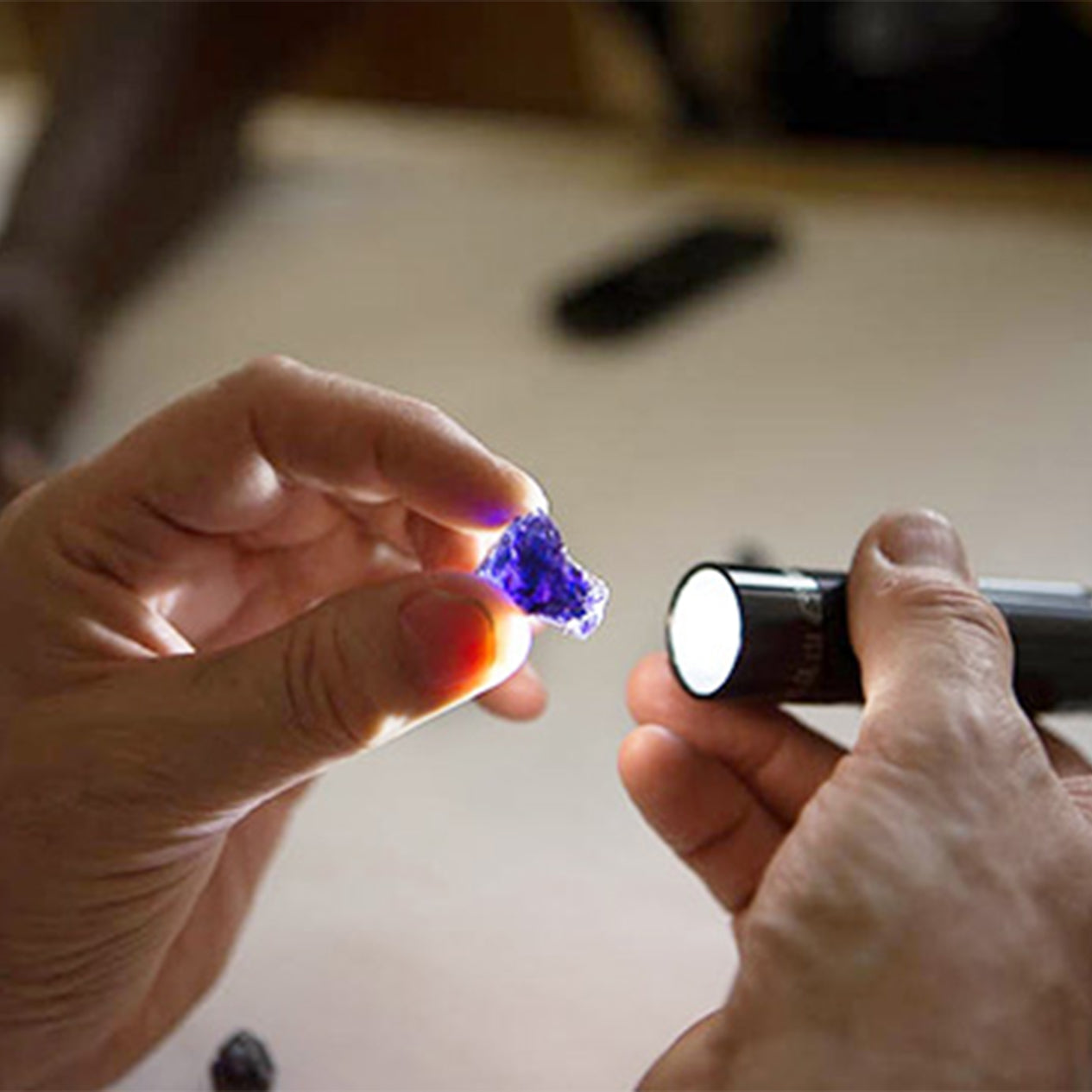
The deeper the colour, the more valuable the gemstone, and has been established that consumers naturally gravitate towards gemstones of deeper colours. Tanzanite gemstones of intense colour are more valuable because they occur much more rarely in nature. The finest tanzanite colours in the world make up only 1% of the world’s tanzanite production. Larger tanzanite gemstones are usually deeper in colour, and it is unusual to find an intensely deep tanzanite that weighs less than 5 carats.
Tanzanite is usually either blue-dominant, or violet-dominant. Though personal preference should be considered before making a tanzanite purchase, it is generally accepted that blue-dominant tanzanite is a better option from an investment point of view, as it is more rare and likely to yield a higher return.
When looking to purchase tanzanite rings in South Africa, or any other tanzanite jewellery creations, you’ll find no higher quality than the Shimansky Ayanda Queen of Tanzanite jewellery collection. Cut to perfection, to enhance the gemstone’s colour and natural beauty, the Ayanda Tanzanite collection offers the finest tanzanite pendants, earrings, necklaces, rings and bracelets. With a wide variety of settings and designs available, the collection offers something for every taste and preference, and it is certain to capture the hearts of all who gaze upon it.

Discover
3. Tanzanite Clarity
A gemstone’s clarity refers to the number of natural inclusions or flaws found in the stone. Inclusions or flaws occur naturally in gemstones, and have an impact on the stone’s value. The more inclusions present in a gemstone, the lower its clarity grading, and the lower its value. The clarity of a tanzanite is graded in a similar manner to that of diamonds, and ranges between Internally Flawless (IF), and Included.
When purchasing tanzanite jewellery, be sure to ask the jeweller for a certificate from the Tanzanite International grading standard, which will state the gemstone’s characteristics and clarity grading. Shimansky does not sell any tanzanite with a clarity grading lower than VVS (very, very slightly included). This means that no inclusions are visible to the naked eye, and that the inclusions that are present need to be magnetized up to six times in order to be seen through a scope.

Clarity measures the incidence of natural inclusions found in a tanzanite stone. High clarity gives the stone added fire and brilliance, and the fewer the number of inclusions the more rare and valuable the tanzanite is. Significant inclusions have the potential of putting a gemstone’s structure at risk, as pressure on such a stone could result in a crack, and even breakage.
When it comes to colourful gemstones such as tanzanite, experts are most concerned that inclusions should not be visible to the naked eye. Though tanzanite gemstones are clarity graded in a manner similar to diamonds, less emphasis is placed the number of inclusions visible when viewed through a scope. With tanzanite, the most important thing, is that the gemstone is “eye clean,” meaning that flaws cannot be seen with the unaided eye. The Gemological Institute of America (GIA), classifies tanzanite as a Type I gemstone, which means it is usually flawless to the naked eye.
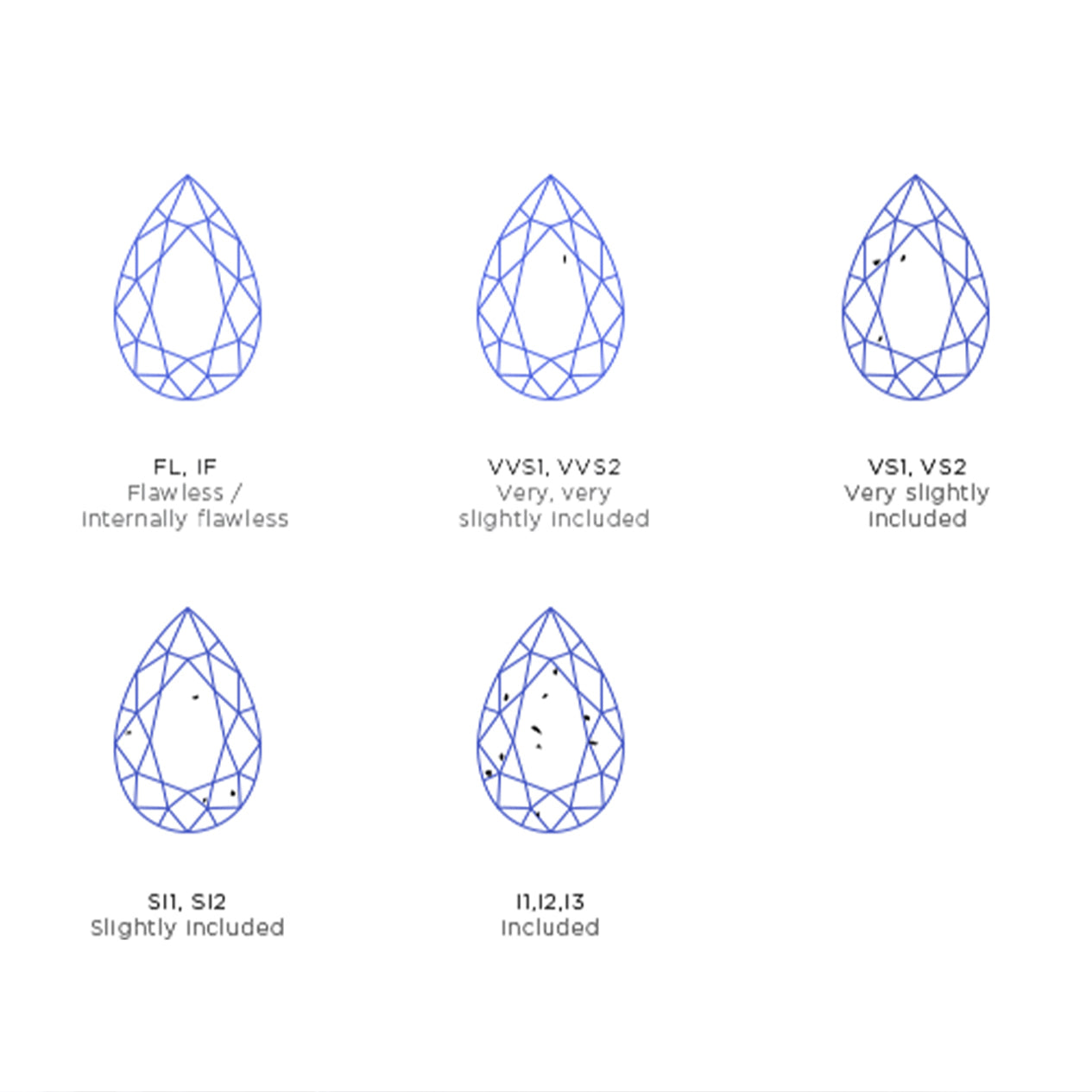
Understanding the Grading Scale
When buying tanzanite in South Africa, and other parts of the world, you may come across various clarity grading scales. Shimansky uses the Tanzanite International grading standard scale for the Ayanda Queen of Tanzanite collection:
- IF – Internally Flawless (no inclusions are present when magnified up to 10x)
- VVS – Very Very Slight Inclusions (inclusions resembling tiny specs are visible when the stone is magnified 10x)
- VS – Very Slight Inclusions (inclusions slightly more pronounced than those graded Very Very Slightly Included are present)
- SI – Slightly Included (inclusions are visible through the crown of the gemstone)
- I – Included (inclusions are visible to the untrained eye)
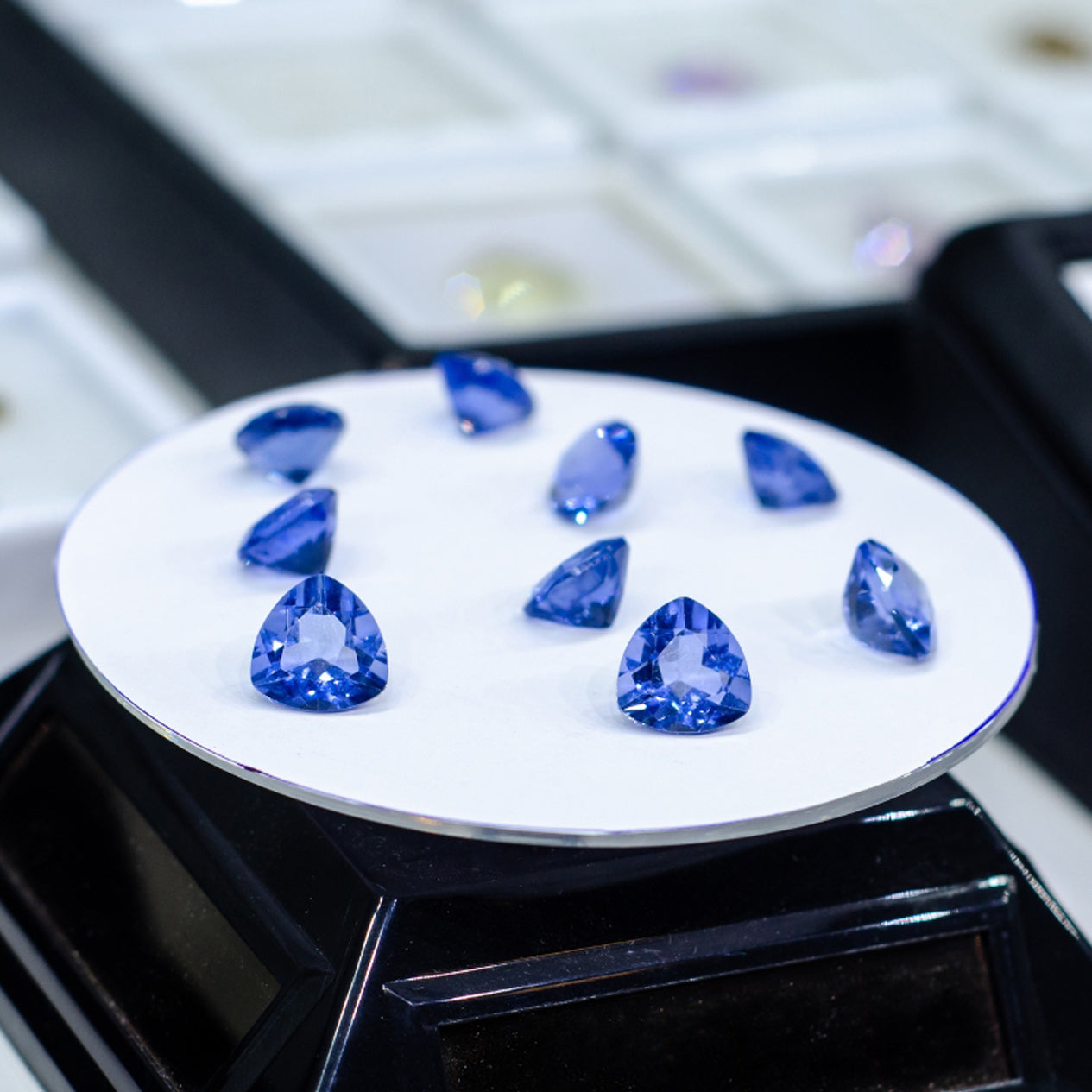
The location of the inclusion plays a significant part in the tanzanite’s clarity grading. An inclusion located in an inconspicuous place, such as near the stone’s girdle, will have less of an effect on the gemstone’s quality, than if the inclusion was located directly under the table facet. However, a significant inclusion located near the culet or corner of the gemstone, will put the gemstone at larger risk of breakage than an inclusion located deeper into the stone.
When selecting your tanzanite gemstone, be sure to understand your gemstone’s clarity grading, and ask the jeweller if you can look at the stone through a magnifying scope. It is important to be certain that your tanzanite does not contain a significant inclusion in a compromising area, and that it does not have any inclusions visible to the naked eye. Your tanzanite ring, or any other jewellery creation for that matter, will soon become a valuable heirloom to be passed down to future generations. Purchase yours from a reputable jeweller who will help you find the highest quality tanzanite gemstone to fit your budget.
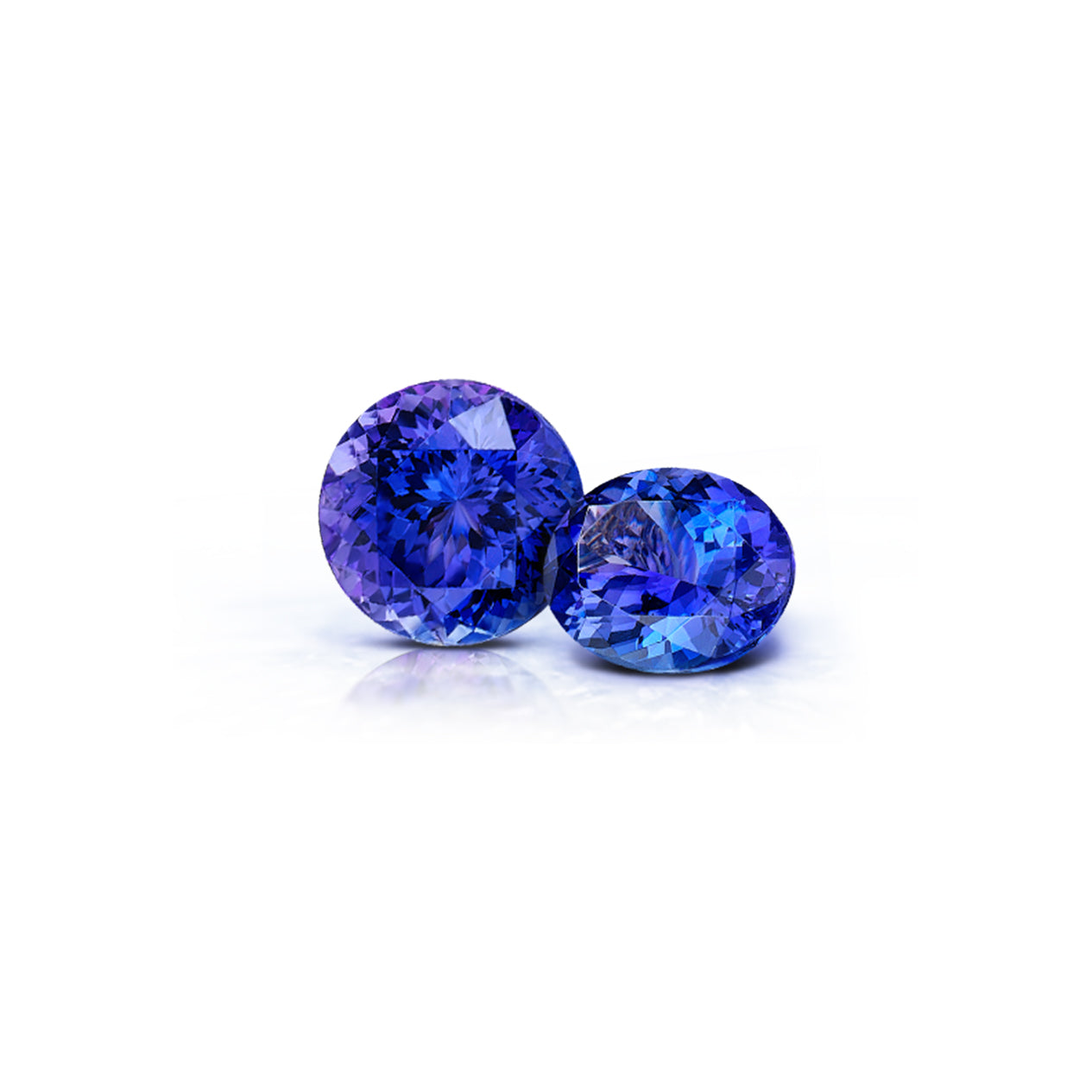
Discover
4. Tanzanite Carat Weight
Like diamonds and other valuable gemstones, tanzanite is graded by weight. A tanzanite’s carat weight is usually a big determining factor for consumers buying tanzanite in South Africa, and other parts of the world, as it has a direct impact on the price. A carat is a unit of measurement equal to 0.2grams (200 milligrams), and refers to the weight of a tanzanite and other gemstones. Large tanzanite is rarely found in nature, so they are more valuable than smaller tanzanite.
Carat weight is a universal, standard measurement of weight that remains the same throughout the world. This means that regardless of where you purchase your tanzanite jewellery creation, the gemstone’s carat weight remains the same, and legible, all over the world.
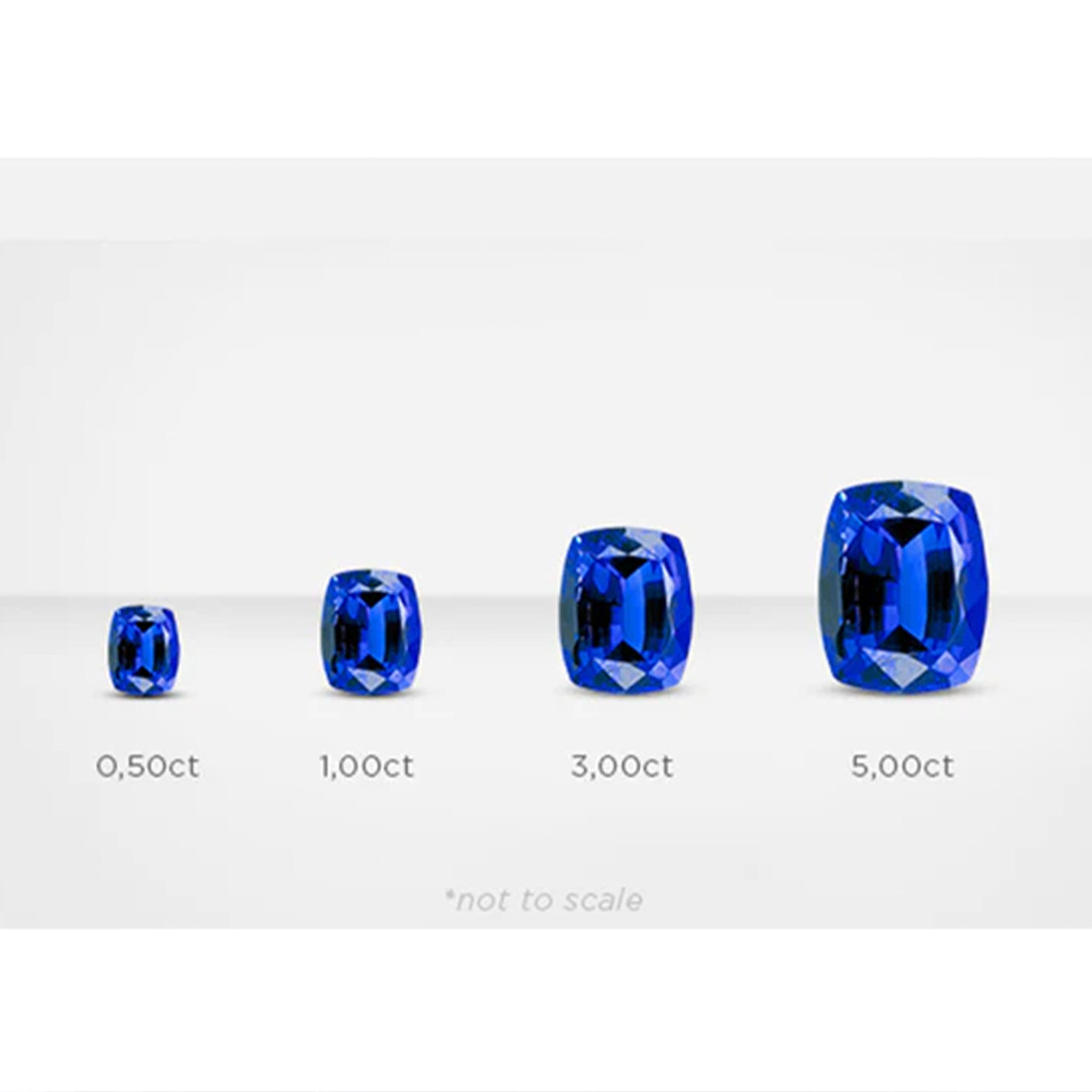
In ancient times, before standard units of weight were implemented, diamond traders compared the size if diamonds to the seeds of the carob tree. Carob seeds had a uniform weight of 200 milligrams (one fifth of a gram), which they rarely deviated from. Hence, they determined the weight of the diamond. Though used for diamonds to begin with, carat weight is, today, the unit of measurement for all precious gemstones. The carob seeds were the start of the carat weight measurement, and today, state-of-the-art weighing mechanisms are used to determine a tanzanite’s carat weight.
The larger the tanzanite gemstone, the higher its value, and the higher its price. Large tanzanite gems are extremely rare, as larger crystals take much longer to grow. Large tanzanite gemstones over five carats generally have a deep blue or violet colour, which is more desirable than the paler lavender or medium blue colour associated with smaller tanzanite gems. Tanzanite weighing over 50 carats is deep blue in colour, and tanzanite weighing over 100 carats is dark blue-black in appearance. These large, dark coloured types of tanzanite are extremely rare and very sought-after by investors and collectors.
Similarly, two diamonds of equal carat weight could vary significantly in price if one were to have a higher cut, clarity or colour grading.

Exploring Size, Depth, and Pricing Factors Beyond Carat Weight
Carat weight refers to the gemstone’s entire weight, which includes its depth. Two seemingly identical tanzanite gemstones can have different carat weights if they vary in depth. Similarly, carat weight is often mistaken for size. Two tanzanite stones with the same carat weight could be different sizes, face up.
Size depends on each stone’s proportions, and the size of the underside of the stone. A tanzanite gem shallow in depth might, face up, appear larger than a tanzanite of the same carat weight, that has a smaller size face up, and a deeper depth. Although carat weight is a big determining factor when it comes to price, it is not the only one. Two tanzanite gemstones with the same carat weight could significantly vary in price if their colour, clarity and cut grading differs.
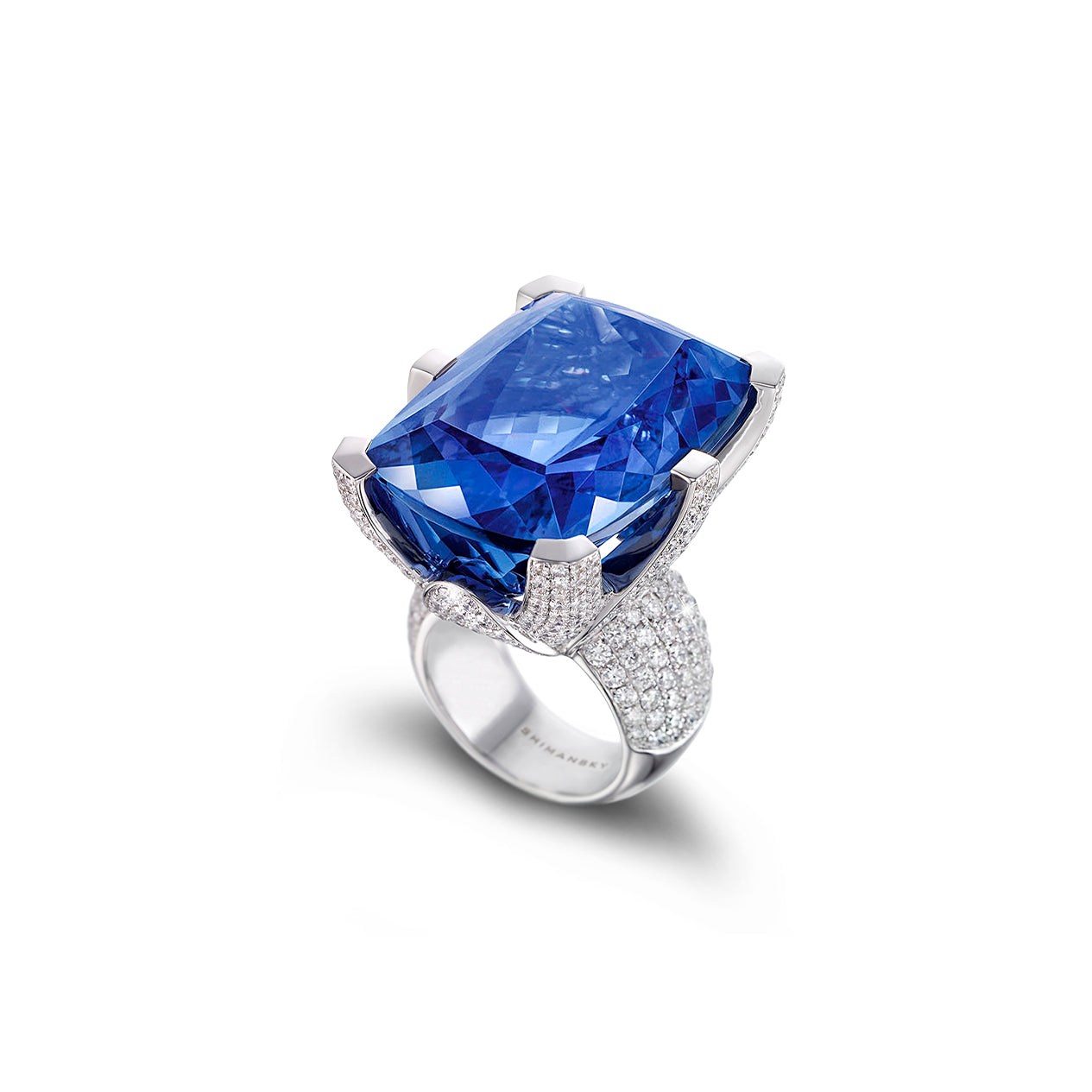
When selecting a tanzanite gemstone, it is important to find the perfect balance between all four Cs. A tanzanite gemstone with a big carat weight, but with poor colour or a poor cut, may very well be less valuable than a tanzanite with a smaller carat weight, but with excellent colour, clarity and cut. Carat weight plays an important role in your tanzanite’s value, but without support from the other Cs, “size” is not the most important factor. When purchasing a tanzanite ring, or tanzanite necklace in South Africa, be sure to ask for the certificate upon viewing the gemstone. This certificate ensures that the weight you are told in-store, is the actual weight of the tanzanite, recorded for your peace of mind.
The Shimansky Ayanda Queen of Tanzanite collection offers a wide variety of loose tanzanite stones and tanzanite jewellery creations in various carat weights. From delicate tanzanite rings to larger loose stones suitable for investment, Ayanda Queen of Tanzanite offers the finest hand-picked tanzanite straight from the Maasai tribe in Tanzania.
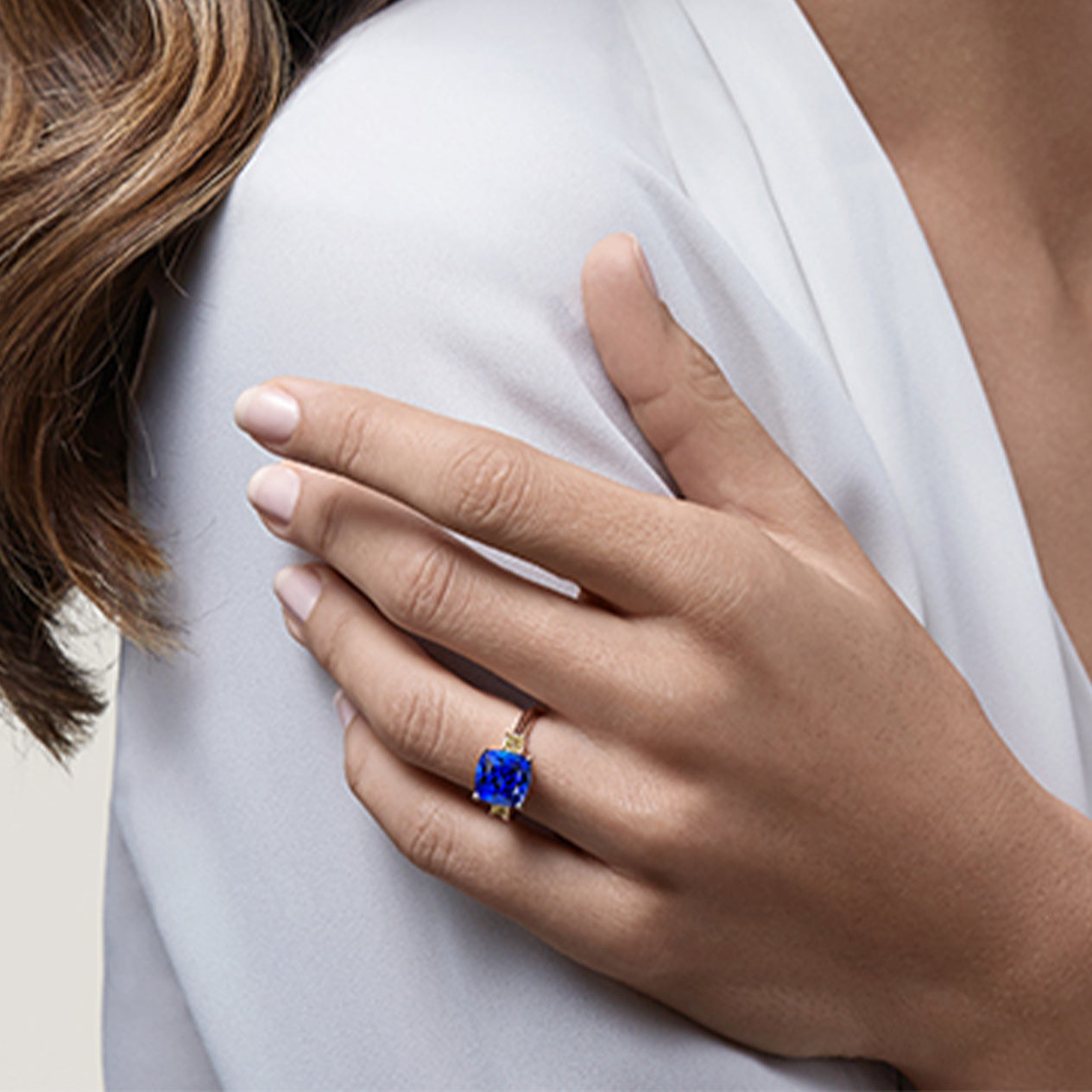
Discover
5. Tanzanite Confidence
Tanzanite is an incredible gemstone that makes a sound investment, and a gorgeous jewellery creation. When purchasing tanzanite, it is important to establish that the stone is authentic, and that it made its way to market via an ethical and fair route. The 5th C is the confidence knowing that you are buying your tanzanite jewellery creation or loose stone through a reputable jewellery and that the journey of your tanzanite from rough to polished was an ethical one.

The Rarity and Geographic Significance of Tanzanite
Extremely rare, tanzanite is only found in the Merelani Hills, a tanzanite mining area of about 4km, in Tanzania. About 16km south of the Kilimanjaro International Airport, the area lies at the base of Mount Kilimanjaro. As this is the only known source of tanzanite in the world, the gemstone is believed to be around a 1 000 times more rare than diamonds, making it extremely sought-after.

Shimansky is devoted to sourcing only the finest quality tanzanite, straight from Tanzania. All Shimansky Ayanda Tanzanite is sold with international certification, and has been sourced ethically and conflict-free. When you purchase a tanzanite ring, necklace, bracelet or earrings from Shimansky, you can be sure that it was mined ethically, under fair and safe mining conditions, and that your precious gemstone made its way into your hands, 100% ethically, and lawfully.
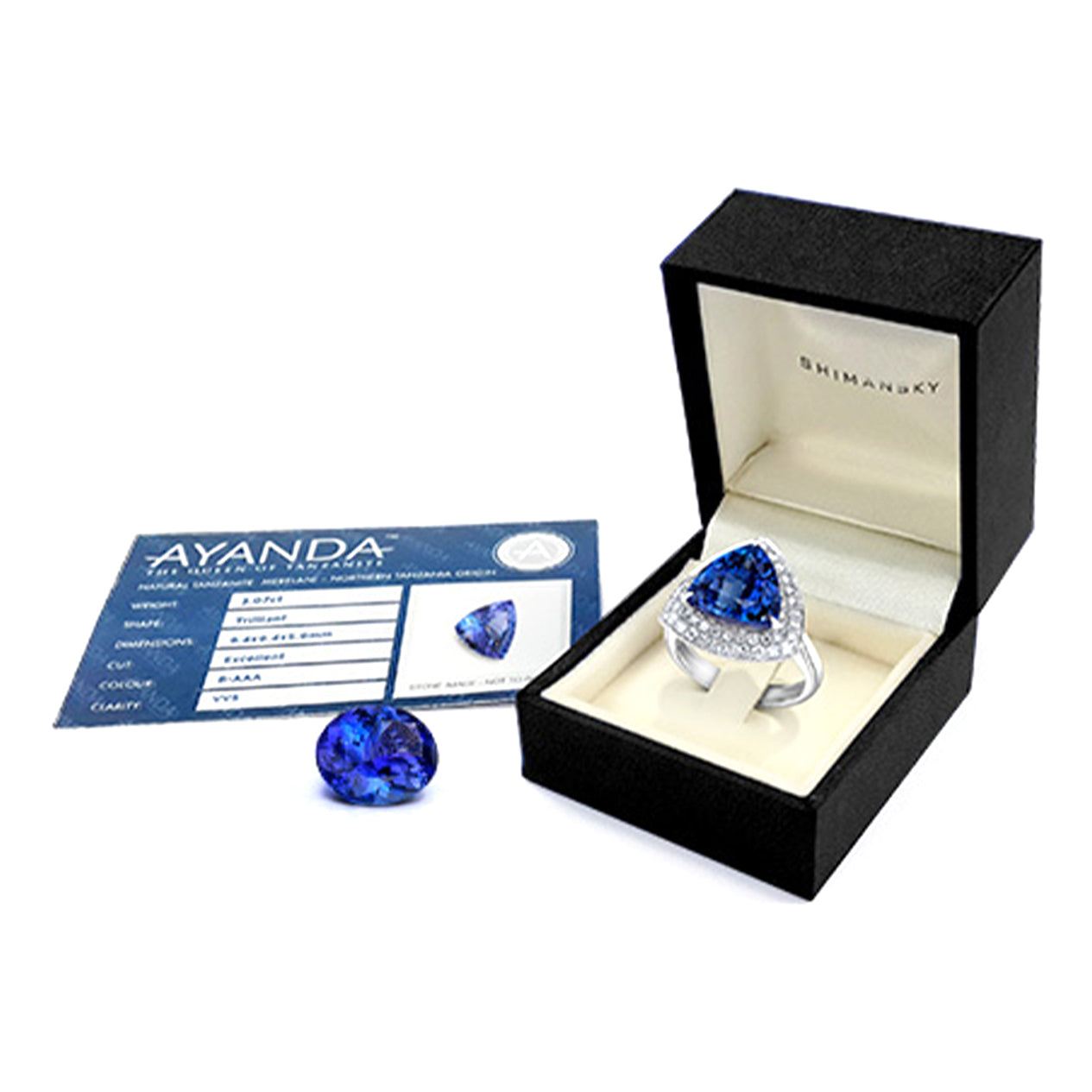
Shimansky: Your Trusted Partner for Ethical Tanzanite Purchases
When buying tanzanite in South Africa, be sure to select a reputable jeweller that is able to provide certification for your tanzanite gemstone, and who has a strong reputation for dealing ethically in gemstones. Your tanzanite jewellery creation will become a precious heirloom to be enjoyed for many generations to come. Knowing that it was sourced ethically and conflict-free ensures a peace of mind, and appreciation for your beautiful tanzanite jewellery creation, for years to come.

